#How to Name Your Norman War Vessel
Text

#How to Name Your Norman War Vessel#tips#tricks#life hacks#helpful hints#advice#boats#war vessels#Norman#Becky#apologies to anyone named Norman#what can we say? boats are weird#also apologies to boats#there’s plenty of “sorry” to go around tonight#well#every night really#you know what?#you probably have better things to do than read these tags#unless you’re us#in which case#here we are
165 notes
·
View notes
Text
Crown of the White Death, or The Asbestos Prom
Senior year was my year. Student council president? Check. Choice college? Check. Prom queen? Check. Stayed with my boyfriend? No. Found out he was a cheating douche? Check. Not have a date to prom? Check. Prom king be a total loser who leaves early? Check.
Meh. Whatever. I don’t need losers in my life, anyways. Which was part of the reason I organized things the way I did. As student council president, I’m the one in charge of planning parties and organizing them. Well, the way I did it this time was just fan-freaking-tastic. Complex, yeah, but name one good thing that’s simple.
Now, my school is kinda set up in a circle. There are seven class areas that connect to two others, one for each subject. And, coincidentally, for each club I’m president of. And each color of the rainbow. Math, science, social studies, language arts, world languages, technology, and art. Chess, Science Honor Society, Philosophy, Creative Writing, Spanish Honor Society, Cyber Security, and Pottery. Red, orange, yellow, green, blue, violet, black. I would have used the massive central courtyard and gymnasium for the final one, made it into a whiteout zone to contrast with the final black area, but there was a horrible asbestos outbreak there a week ago so it was shut down. Oh well. No plan survives first contact with the enemy, right?
So, if you weren’t in one of those clubs, I tried to make sure you didn’t come. Giving discounts to club members, targeted harassment, not telling people that the gym was full of asbestos, all that stuff. You know, to save space. No sense in wasting that on losers. Especially not losers who now have asbestosis. You don’t need all that nastiness here.
So, club members were in their respective areas, there were very few non-club members here, and everything was set up. There wasn’t really a theme, but everyone had kinda taken to wearing their own things. My student council team wore small, masquerade-style masks.
I stalked through the halls of the school, basking in the glory that I had made this happen. My entourage of student council members followed me. We didn’t really talk- for some reason, they didn’t like to talk to me. No one did, actually. But hey, that’s fine. I don’t need anyone.
I started my second round down the halls, starting at the red chess area. The chess club members wore simple, black-and-white formal clothing, contrasting against the various red tones of the math department. A few of them had chess pieces emblazoned on their dresses or suit jackets. They visibly paled as I walked in, making way for me and my group.
Then, I walked into the orange room, with a single massive paper-mache microscope in the center. The club members here wore stylized lab aprons, gloves, and goggles, designed more for fanciness than protection. There was a refreshment table full of smoking drinks in plastic flasks, which were evidently highly enjoyable. The vice-president of the club dropped her drink as I walked in, and it stained the carpet.
“Uh, h-hey, Prez.” She stammered out.
“What’s your problem?” Harsh, sure, but I had things to do. Well, not right now, I guess, but normally I do.
“Richard, uh, he saw, he saw, uh-”
“Christ, just spit it out already!”
“Norman! He’s here! In the next room!”
“Oh what the fuck.” I seethed.
That bastard. I told him that I never wanted to see him again. And now he showed up? Here? Oh, I’m going to tear him a new one. Quite literally.
I walked speedily into the next room. My face was a placid mask, and I walked with grace, but my hands were clenched. I felt skin split along my knuckles.
In the yellow room, there was only the paled philosophy club, goofily dressed up like different figures from history. I know they had fought tooth and nail- literally- over who got to be Aristotle. She averted her eyes- sorry, eye, now- to the ground. Plato glowered at her. That one didn’t need a bald cap anymore.
“Next room. Sorry.”
“Goddamnit.”
Creative writing. They had transcribed their favorite books into tattoos on their skin. Weird stuff. Kids were like a cult almost, which was why they were my least favorite. They still looked away from me as I stalked into the Spanish Honor Society’s room.
Huh. There was no one in here. Just an over-saturated blue. It hurt my eyes. Makes sense why no one was here.
It was similar in the purple room. The cybersecurity kids were in here, though. They scampered around on the floor, completely nude but for the blindfolds they wore. I was about to walk into the final room, but I hesitated. My ex was a big guy. Maybe I should have my entourage join in?
I turned, and they weren’t there. They must have stuck behind in one of the other rooms, too scared of him to go in. No matter. I’ll deal with this myself. Like a real queen should.
The black room was, of course, pitch black. But for a glow that emanated from a figure in the center. My ex. He was, of course, in the most infuriating costume I’ve ever seen.
He was thin, scrawny. Which should have seemed impossible, given how he was two-hundred pounds of muscle last week, but whatever. He wore a long coat and a pair of pants, both pure white. His face was alabaster white, just like my mask. Actually, I think it was a mask. As I walked closer to him, I heard wheezing, like his breath was short. His mouth and chest were scarred with bumps. Every breath he took almost inverted his chest, actually. His skin and eyes were irritated, but not red. Just white.
He coughed, a wet, hacking noise, and something came out. A small, wet piece of flesh flew from his mouth. It hit the ground just in front of me. It was just like his chest. Scarred, bumpy, and pure white.
Oh God. He was flaking. Clouds of little white flakes left his mouth with every exhale. Little bits left other parts of his body with every movement. Mostly his fingers and shoulders. The greatest amount of dust, however, came from the chunk that had left his mouth.
The worst part of all this, the real kicker, was the crown. It covered the top half of his eyes, like a blindfold almost. It was white and gold at the same time. I- I’m not sure how, it just was. It was bigger than my own crown, too. Like he was the prom king. A prom king afflicted with asbestosis.
Oh, that asshole. I pulled my hand black, and slapped him across the face.
But I didn’t. There was nothing there. Just a mask and clothes, crumpled on the floor.
I wheezed. Coughed. Something came out of my throat. Something wet, bumped, and scarred. And then I blacked out.
‘
Senior year was my year. Student council president? Check. Choice college? Check. Prom queen? Check. Just an awesome year.
As student council president, I’m the one in charge of planning parties and organizing them. Well, the way I did it this time was just fan-freaking-tastic. Complex, yeah, but name one good thing that’s simple.
Now, my school is kinda set up in a circle. There are seven class areas that connect to two others, one for each subject. And, coincidentally, for each club I’m president of. And each color of the rainbow. Math, science, social studies, language arts, world languages, technology, and art. Chess, Science Honor Society, Philosophy, Creative Writing, Spanish Honor Society, Cyber Security, and Pottery. Red, orange, yellow, green, blue, violet, black. I used the massive central courtyard and gymnasium for the final one, made it into a whiteout zone to contrast with the final black area.
It was all pretty sick. Just the greatest party ever. There was only one problem: I had shown up late. And my prom king and boyfriend had probably taken his throne without me. But that’s okay. My entrance is going to be fantastic.
First stop, red. The chess room. My royal entourage behind me, we quickly strode through the room. It was a pretty fun design. The checkerboard people flickered in and out of existence. Black to white to black again. Good people. Fun to be around. Very, very smart, and very good at games. I was a big fan of the way they dressed up for the occasion. Old-fashioned in a new way, I guess?
Orange, now. The scientific. Loose strands of DNA littered the area. They looked like flasks, this time around. Filled with steaming liquids. They drank from plastic skulls full of juice. Nonalcoholic, of course.
Anyways, next room. yellow. Weird guys. I heard that this year, like always, they had fought over who got to be who. The leader was always Aristotle, but the others got to war over Descartes and Plato. Me, I prefer being the same person all the time, but different strokes for different folks, right?
Into green. The written. The folks in here had yellow skin, like an old book. The actual brains were written on them, though, like inked tattoos. It really must suck, being mental when all your friends are physical. Then you have to buy bodies, and actually get yourself in them. They’d bought cheap, but they made it look nice. Careful not to touch any bodies and smudge someone off, I went into the next room.
Blue, now. Just one member, in here. Spain looked at me with their thousand burning eyes. An army of skulls chanting in the darkness as their fingers danced. The mountains and rivers become nails and blood vessels. Twirling shapes in the darkness. A single piercing shriek echoing through the void.
Classy fellow. I’m glad they showed up. And in their best dress, too.
Okay. Purple. I walked through the blind, deaf, mute things. Cylinders of flesh that faintly throbbed as they sat in their chairs. Blindfolds covered alternating parts of them, like stripes. They rocked a little, swaying from side to side. It wasn’t due to any outside influence. Just their minds. I tried it once. The whole sensory deprivation thing. I got too antsy in there. Too many irons in the fire, you know.
Final room. Black. I was the only one in here. It was pitch-black, of course. Wet too. It thumped, and I could feel it beat around me. Thump. Thump. Thump.
I emerged from the pot, and entered into the white room. The throne room. My court. They were all there. Everyone from before. My kingdom bowed as I entered. And he was there. On the throne, with mine next to him. Two equal chairs, to represent two equal forces. The king and his queen. The light and the dark.
Pieces drifted from him, up into the sky. He breathed and his chest inverted. His crown was large, white. Beautiful. I couldn’t see my own, but I knew it was just as beautiful. I took my place next to him, sitting. And the kingdom was whole again. White and black united to become perfection. One that would reign for the rest of forever.
This is such a kickass prom.
1 note
·
View note
Text
Hogwarts Needs Archaeologists, Part 1: Fantastic Antiquities and Where to Find Them

By Adrián Maldonado
The Harry Potterverse is crawling with ancient artefacts and old magic. That doesn’t make it a story about archaeology as such – there is very little effort from the protagonists to do more than treasure-hunt (and in at least one case, tomb-raid) to collect and then destroy these artefacts. In one sense, the Harry Potter cycle is a parable of Fantastic Antiquities and How to Break Them.

Tom Riddle, Tomb Raider (source)
Which is why I haven’t felt the need to do an ‘archaeology of Harry Potter’ post on this blog. But then I went back to the books again. Well, sort of. I am lucky enough to share a timeline with the Binge Mode podcast by the superheroic duo Mallory Rubin and Jason Concepcion. Their breakdown of the books and films, chapter by chapter and scene by scene, with added detail culled from the wider (so wide) Potter canon, has reawakened my appreciation for the depth of JK’s creation. And, this should surprise absolutely no one by now, it makes me think there’s lessons for archaeologists in the Potterverse.
This will take more than one blog post to tease out. To begin with, we can start by looking at the vast array of antiquities which feature in the books’ own timeline. From there, we can explore how archaeology might work in the wizarding world, and then bring it back to reflections on Rowling’s uses of the past more generally. Speaking of the past, if you don’t want books from 20 years ago spoiled, well, tough look, my guy.
Medieval archaeology
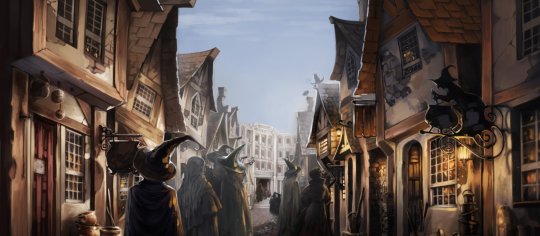
Getting medieval in Diagon Alley (source)
To begin in the most obvious place, there is a lot in the wizarding world which owes its origins to the Middle Ages. According to Rowling’s Pottermore website, Diagon Alley and its major landmarks such as the Leaky Cauldron and Gringotts go back to c. 1500, retaining a ramshackle medieval aesthetic. The prison of Azkaban originated as the fortress of the fifteenth-century sorcerer Ezkidris. Even things which don’t appear obviously medieval are revealed to be medieval on Pottermore: the Quidditch World Cup has been played since 1473, and Floo powder, the magical form of transport, was invented in the thirteenth century by Ignatia Wildsmith (which, if I have another daughter, I will definitely adopt as a name).
The structural medievalism of the Potterverse includes Hogwarts School of Witchcraft and Wizardry itself, a ponderous castle-university suffused with old magic. Oddly for Britain’s premier (only?) centre of magical learning, we do not seem to know exactly how old it is, but its founders all seem to have lived in the tenth century according to Pottermore. This would make it earlier than the first Muggle universities, themselves a product of the twelfth century and later. It is interesting to think that the robe-wearing denizens of Oxbridge and St Andrews are merely replicating earlier Hogwarts traditions.
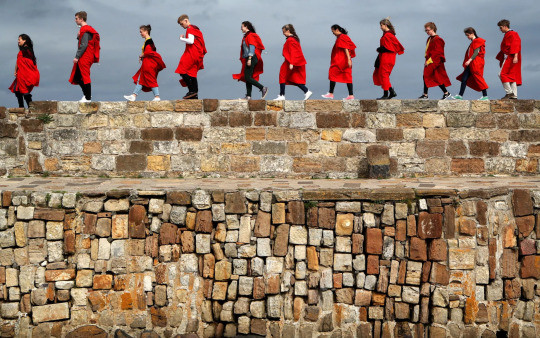
Echoes of Hogwarts (source)
What is less immediately obvious is that Hogwarts’ medieval origins are communicated largely through material culture. The Sorting Hat belonged to founder Godric Gryffindor, and so is at least a thousand years old. The Mirror of Erised is also said to be ancient, though we are vague on dates. Does age confer magical properties, or have these objects survived due to the power of their magic? It can’t be the latter, as we are continually reminded of the precarious state of antiquities in the Potterverse. The Hogwarts houses retain stories about early medieval artefacts associated with the lives of their founders, including Rowena Ravenclaw’s lost diadem, Helga Hufflepuff’s cup, and Gryffindor’s Sword; Slytherin House has no equivalent relic-mascot although it does boast its own Chamber of Secrets (not a euphemism). Each of these objects is lost, stolen, or defiled in the course of these stories.
Ravenclaw’s diadem was lost almost as soon as it was made, and Slytherin’s Locket was never kept in Hogwarts, showing the somewhat less than reverential treatment of these artefacts, even among those who should best appreciate their value. More on Slytherin’s personal effects later, but it may be worth noting here that his Chamber was until lately populated with a living balrog, I mean Basilisk, which was at least as ancient as Slytherin before its murder by a student dangerously swinging another medieval artefact in 1998. Guys. Lock down your antiquities.

Days without an accident on site: 0 (source)
Of these artefacts, only the Sword of Gryffindor was curated to any extent, even if only as a wall-hanging which, let me repeat, students were allowed to handle. Hufflepuff’s cup was kept in the common room of its founder’s house, allowing it to be stolen and inhabited with cursed fragments of soul which almost led to the demise of the rules-based wizarding world order. In the end, Helga’s cup was found in a damn bank vault instead of a climate-controlled museum store. Listen, a secure, alarmed case may not have stopped Voldemort, but we could have at least saved these precious witnesses of wizarding origins from being callously destroyed in the war. Who will be the wizarding Mortimer Wheeler next time?
Excavating Hogwarts
Reading through Pottermore, it transpires that paying no heed to the medieval material world our protagonists live in is actively causing them harm. Two of Voldemort’s horcruxes, Slytherin’s Locket and Marvolo Gaunt’s Ring, date back to the early medieval period, but were kept as personal possessions passed down the Gaunt family line, allowing them to be easily stolen or sold, and, again, be haunted by evil curses. Guys. Where do I send my CV to develop a course in Material Culture Studies at Hogwarts? Better yet, let’s make it a MOOC, train members of the public, and then maybe next time someone tries to pawn an ancient relic our world isn’t threatened by cursed archaeology.
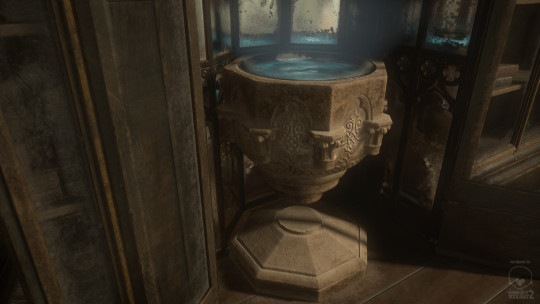
Please don’t drink from the archaeology (source)
My favourite revelation is that the Hogwarts pensieve, the expositional device in Dumbledore’s office which allows Harry to experience flashback sequences along with the reader, is a noted antiquity itself. It is said to be a stone basin inscribed with Saxon runes, and to have been found buried on the spot where Hogwarts would be built.
I can’t just pass this by. Why would a pensieve be buried? We know that wizards are buried with their wands, as recounted to plot-driving effect in Dumbledore’s case. It also transpires that, like wands, pensieves are very personal items, and are customarily buried with their owners along with any memories they have stored. What an incredible boon this would be for a wizarding archaeologist! And how well would this explain all the now-empty vessels we have found used as grave goods since prehistory, usually explained by us dull-minded archaeologists as ‘food-offerings’. Along with the spell priori incantatem, which allows one to see the last few spells a wand was used for, an archaeowitch encountering a burial furnished with wand and pensieve would have an unparalleled insight into the lives and deaths of the wizarding dead.
Back to the Hogwarts pensieve, then, we have a massive stone basin inscribed in Saxon runes, which would be rather out of place in the early medieval Scottish highlands, where Hogwarts is based. Is this a disturbed wizard’s tomb or a ritualised offering in a wetland setting? Once upon a time, this find would be taken as evidence for Anglo-Saxon invasion, but now we recognize that objects could be transported for a variety of reasons, and indeed are themselves more likely to be used in votive deposits due to the value they have accrued in the journey. It would certainly merit further investigation whether the Hogwarts loch was chosen by its founders not for its now-isolated and depopulated landscape, itself a product of fairly recent historical processes, but because it had an existing heritage as a site of ritual deposition. We can only hope, for the sake of its students, that the founders undertook some due-diligence magical remote sensing to detect any complicating factors from buried magic, dark or light, before undertaking a major construction project. But beyond health and safety concerns, I feel that we have lost something else by not recording what has presumably been a cult place.
A medieval inheritance
Pottermore also traces the origins of several major wizarding families to the Middle Ages, most notably the Malfoys. Their lineage can be traced back to Armand Malfoy, who helped William the Bastard become Conqueror of England in the real-world timeline: “Having rendered unknown, shady (and almost certainly magical) services to King William I, Malfoy was given a prime piece of land in Wiltshire, seized from local landowners, upon which his descendants have lived for ten consecutive centuries.” In gratitude for their help with the Norman Conquest, he was granted a manor, which has passed down the family for 1000 years to Draco Malfoy. The mansion itself is said to be filled with ancient magical and muggle artefacts and priceless artwork, as so many stately homes were by the nineteenth century. Many of Britain’s museums were founded through bequests of such private collections, and these would make an interesting, if dangerous, Dark Magic wing of a Wizarding Museum. Given the spectacular fall from grace of the Malfoy family in the second wizarding war, I do worry about the status of the Malfoy collection, and whether it is at risk of being hived off in auction. The Draco Malfoy essay does reveal that he still lives in the manor with its artefacts after the war, so we still live in hope that this heritage resource has not been lost.

Even dark artefacts need curators (source)
In light of their family history, it would be easy to laugh off the Malfoys’ malevolence as the entitlement that comes from old money, but it should be noted that Harry Potter is a noted trust-fund baby himself. For all his remarkable magical prowess, Harry Potter’s destiny is also down to some serious inherited privilege. His medieval progenitor Linfred of Stinchcombe, who also lived in the Norman era, built up the family’s wealth through his famous inventions, including potions like Skele-gro. Their marriage into a wealthy family in Godric’s Hollow is also auspicious – as home to the Peverils and the Dumbledores, whose stories are so indelibly entwined in the history of wizarding Britain, this little village in England’s west country seems to have been the epicentre of magical achievement for a millennium. Something in the water, perhaps? Or a self-segregating community of elite families? It is through these connections that the Potter family came into possession of one of the Deathly Hallows, the invisibility cloak, in another form of inheritance which increasingly looks like the secret of Harry’s success.

Godric’s Hollow - in dire need of graveyard survey (source)
The Hallows themselves are the key to Dumbledore and Harry’s success, and Voldemort’s undoing, Unbeknownst to many, the Resurrection Stone, invisibility cloak and Elder Wand all seem to be inventions of the Peveril brothers in the thirteenth century. We know this partly because Harry and Hermione stumble on Ignotus Peveril’s medieval gravestone in the churchyard of Godric’s Hollow, clearly marked with the sign of the Deathly Hallows, at which point things begin to come together. Basically, Voldemort is able to be defeated because he only trafficked in antiquities, without researching their archaeological context – but in fairness, neither did Dumbledore and Harry until very late in the game. A simple bit of churchyard recording may have brought this to the attention of local history buffs much sooner, and we may all have been safer for it. Basically, folks, local heritage is all of our heritage, and is not just for tourists obsessively chasing only their own family history.
Potter’s pedigree
And so we come to genealogy, which is the secret engine of this cycle of stories, just as it seems to be in so many of our favourite fantasy worlds. The objects, people and places profiled here all seem to be the remnants of stories which seem to begin no earlier than the tenth century or so. But it is clear that the wizarding world existed before then, and the limits of our vision can be explained by the fact that the first university was established at that time, and presumably the recording of historical events as well. In short, the narrow focus on a small pool of influential families and their feuds are the unresolved business of the formation of medieval kingdoms of England, Wales, Scotland and Ireland, as indeed is so much of our own contemporary politics. What if our consciousness extended to the messier early medieval kingdoms, or (whisper it) prehistory? Just how problematic would a wizarding archaeology be? And could it free us from the Great Men and Their Battles vision of the human journey? Let’s pick up our trowel-wands and find out.
***
Forward to Part 2: Excavating Magic
Follow us on @AlmostArch
38 notes
·
View notes
Text
Sicilian Wine
https://j.mp/3yWGz0u
If the idea of walking up to a sage-scented ocean breeze sounds alluring, what about sipping coffee in an ancient fruit orchard while looking out over the crystal-blue Mediterranean? The Sicilian countryside seems to exist in another timeline. A magical place, to be sure, but can any place be a paradise for long? The only thing rarer than a GPS signal is a street sign. The shepherds and their sheep are quaint only the first time they block the road for twenty minutes. And what to do with that herd of cows that keeps breaking into your pasture, trampling your garden? Table of contentsA Short History of Wine in SicilySicilian Wine Regions: Province of RagusaThe Wines of Cerasuolo di VittoriaFeatured Ragusa Wineries: COS and Arianna OcchipintiSicilian Wine Regions: Province of TrapaniThe Wines of MarsalaSicilian Wine Regions: CataniaThe Wines of Etna A Short History of Wine in Sicily In the 8th Century BCE, Greek colonists became the Island’s first winemakers. Ancient texts describe Dionysus, the God of Wine, dancing as he planted the first grapevine in Sicily. Thanks to archeologists, we know these vineyards were located in the black hills under Mt. Aetna, a still-active volcano. In time, the Romans conquered the island, and that opened Sicily to the world. These wines were traded as far away as modern-day France and Germany. Production boomed. A notable ancient wine was Marsala, a fortified wine made on the western coast. A British merchant popularized the wine in the 18th century and soon compared it to Portugal’s Porto wines. The history of Sicilian wines would likely have continued apace. Then, however, in the late 19th century, an invasive parasite invaded the vineyards, killing most vines. This was the Phylloxera epidemic, and it drew a stark red line between the 19th century and today. It was only in the last half of the 20th Century when Sicily recovered its winemaking mojo, thanks to wineries like COS, Planeta, and Ceuso. Sicilian Wine Regions: Province of Ragusa Ragusa is the most southernmost province of Sicily, situated in the Val di Noto. It is a place of rolling hills, dramatic shorelines, and ancient towns. The region’s namesake city dates back to Greek times but was destroyed by the earthquake. It was and completely rebuilt in the baroque style in the 17th century. Other important towns include Scicli and Modica. Like Ragusa, many of the buildings are in the Late Baroque style. The other key component of these cities is their culinary and winemaking traditions. The Wines of Cerasuolo di Vittoria Cerasuolo di Vittoria is the most important appellation in Ragusa, dating back to the 7th century BCE. The name refers to an elegant refreshing style of wine. Cerasuolo refers to the light red hue of the wine. Vittoria is a city west of Ragusa and the center of the wine region. The wine is an odd –but brilliant– coupling of two native varietals, Nero d’Avola and Frappato. Nero is an intense hulk-ish red that tends to produce angry and magnetic wines. Frappato makes a light, nearly pink wine that is all about roses and ocean breezes. The wine produced within an even more restricted area will have the appellation’s term “Classico” appended. The region was awarded DOC status in 1974. In 2005, it was upgraded to DOCG, the highest level of classification in Italian wine. Featured Ragusa Wineries: COS and Arianna Occhipinti COS is the acronym of the surnames of the Winery’s three founders: Giambattista Cilia, Giusto Occhipinti, and Cirino Strano. In 1980, these young men leased a small winery and vineyard from a family member. The first vintage produced a meager 1470 bottles. Year by year, the volume increased, but so did the quality and international acclaim. Then, by 2000, they brought back an ancient Sicilian tradition: using amphorae (clay vessels buried underground) to age their wines. It’s a technique that has now been adopted across all of Italy. Their finest Cerasuolo di Vittoria is the “Delle Fontane”. It is red ruby in color, with aromas of cherry, blackberry, and currant. The flavors of fresh roses and toasted spice are alluring, and the palate is fresh, elegant, and Mediterranean. The Arianna Occhipinti story is a more recent addition to the Sicilian wine scene. Arianna is the niece of Giusto Occhipinti, of COS fame. She opened her eponymously named winery in 2004 in Ragusa. What began as a tiny one-hectare operation now spans over 22 hectares, mostly Nero d’Avola and Frappato, Albanello and Zibibbo, two local white varieties. Her top-level is the Cerasuolo di Vittoria ‘Grotte Alte’ i s aged a minimum of 32 months in massive Slavonian oak buttes. The wine is an intense ruby red color with garnet shades. The nose is fragrant, with details of sea spray, sour cherries, and oriental spices. The palate is intense and elegant, soft and round, with a persistent and salty aromatic finish. Sicilian Wine Regions: Province of Trapani Trapani is a Bronze-age commune that is still thriving in the modern era. Located on the island’s west coast, it has been a major port for two Sicilian products, wine, and salt, since the beginning of recorded history. A naturally protected inlet, Trapani has the capacity to enforce naval superiority over a vast section of the Mediterranean. Over the past two thousand years, this sickle-shaped port has been the focus of countless wars and occupations. From the Punic Wars of Ancient Rome to World War Two, this port drew dozens of ancient cultures into Sicily, only to be absorbed into the island’s culture. Phoenicians, Arabs, Romans, Normans, and Spaniards have contributed to Sicily’s food and wine traditions. The Wines of Marsala Long before a wine bore its name, Marsala is an ancient city built on the ruins of an even more ancient city, Lilybaeum. The town’s economy, like much of Trapani, was based on their salt ponds and vineyards. By the 17th Century, the world’s economies were recovering from the centuries-long medieval depression. Times were good, but the local winemakers had a problem: a growing wine market was growing, but their white wines spoiled too quickly to ship. So they had started using large oak barrels to store the wine, which helped. Then they heard of a new technique developed in Portugal: fortify the wine by adding spirit to the fermenting must. At about this same time, bottled wines became a status symbol. So a bottle of new wine was born. The wine rose to fame in the early part of the 20th century, only to come crashing down just as quickly. Marsala was the only wine available during Prohibition (doctors were allowed to prescribe it). As a result, it wasn’t too long before there was more counterfeit Marsala than real. That fact, sadly, continues through today: most Marsala in American shops are pale imitations. To seek our true Marsala, look for the term “Superiore Riserva” on the label. Your mind will be blown with the flavors of toasted almonds, fresh figs, and chocolate-coated raisins. They make for great aperitifs. Sicilian Wine Regions: Catania Catania is defined by the heart of Sicily: Mount Etna, the still-active volcano that the entire island is balanced upon. Located on the Northeastern shore, the region is famous for its black volcanic soils. Its buildings are built of the same stone, and its roofs are blackened by centuries of volcanic plumes. The largest city is also named Catania and has been rebuilt dozens of times since its founding in 729 BCE. But, unfortunately, the town has been destroyed by lava flows and earthquakes, wars, and social unrest. How did a region so unlucky survive so long? It comes down to the lava flows: they are the cause of so much despair, but also why Catania thrives. Over centuries, lava rocks evolve into black volcanic soils that are fertile and life-sustaining. They are why Sicily is an agricultural wonderland. travel to Italy – panorama with villages on green hills and Etna volcano in Sicily The Wines of Etna The specialness of this region can be inferred by the fact that it was the first recognized wine appellation in Sicily (it earned its DOC in 1968), a full nine months before Marsala. This region’s essential red grape varietal is Nerello Mascalese, crafting a complex but wild wine that often feels like a confluence of wild-grown fruit and a core of intense minerality. The whites of the region include native varieties include Carricante and Catarratto. The former produces light and ethereal wines that are simple and perfect with summer fish dishes. Cattaratto is lush and intense, going toward tropical fruit infused with tarragon. This is also a place that attracts crazy European winemakers with a zeal for eccentricity. Just spend a few minutes with the wines of Frank Cornelissen, and you’ll understand. By Keith Wallace https://j.mp/3yWGz0u
0 notes
Text
SUMMARY
The film opens as Rose is found drifting alone in a small rowboat. Two fishermen find it and pull her onto their own boat, barely alive and in a horrible state. Her voiceover indicates she had been rescued from some terrifying experience and the film’s events are flashbacks of it.
Rose is part of a group of tourists on a small commercial boat. The Captain and his mate, Keith, share a fondness for Rose. Also on board are Dobbs, who is the boat’s cook; Chuck, another tourist; and a bickering married couple named Norman and Beverly. After trouble with the engine, the navigation system goes haywire when they encounter a strange orange haze. The others sense that something is wrong. Norman in particular becomes abrasive. In the darkness of night, a hulking ship suddenly appears and sideswipes their boat. The Captain sends up a flare, which momentarily lights up the eerie sight of a huge, rotting vessel wrecked nearby.
The next morning, everyone wakes to find the Captain missing. Realizing the boat is slowly taking on water, everyone evacuates in the lifeboat and makes for a nearby island. They see the huge wreck in the light of day; it appears to have been there for decades, nothing more than a skeletal framework, and now seemingly immobile, stranded on the island’s reef. The group is startled to find the body of the Captain, apparently drowned while he was trying to check the underside of the boat for damage. They explore the island and discover a large, rundown hotel. At first they think it is deserted, but they discover a reclusive old man living there.
The man seems alarmed by their story, and he goes down to the beach to personally investigate. Under the water, strange zombie-like men gather, walking from the wreck along the ocean floor to the island. As Dobbs gathers items to help prepare food, the zombies corner him in the water and one of them attacks; before it kills him, Dobbs falls in a cluster of sea urchins and is horribly mangled. Rose discovers his body while swimming. Back inside the hotel, their reluctant host tells them that he was a Nazi commander in charge of the “Death Corps”, a group of aquatic zombies. The creatures were intended to be a powerful weapon for the Nazis, but they proved too difficult to control. When Germany lost the war, he sunk their ship. Knowing the zombies have returned, he says they are doomed. The Commander goes down to the beach again and sees a few of the zombies off in the distance; they refuse to obey and drown him.
The others locate a boat that the Commander told them about and pilot it out through the streams to the open water. They lose control of the boat, and it sails away from them, empty. A zombie drowns Norman in a stream, and another chases Rose back to the hotel, where she kills it by pulling off its goggles. Chuck, Beverly, and Keith return to the hotel, and they barricade themselves in the refrigerator unit. The close quarters and stress cause the survivors to begin infighting, and Chuck accidentally fires a flare gun, blinding Beverly. Keith and Rose escape to an old furnace room, where they hide inside two metal grates, while Beverly hides in a closet. The zombies drown Chuck in a swimming pool outside.
The next morning, Keith and Rose discover Beverly dead, drowned in a large fish tank. Now on their own, they try to escape in a small sightseeing rowboat with a glass bottom. The zombies attack, and although Keith manages to defeat one by pulling off its goggles, a second one grabs him and drowns him just as the dinghy breaches the reef and drifts free. Rose sees Keith’s lifeless body pressed up against the glass bottom of the boat and screams.
The film comes full circle, and Rose’s voice over returns. She is now in a hospital bed, seemingly writing in a journal. Her dialogue begins to repeat itself over and over, and she is revealed to be writing nonsense in her journal, showing that she has gone insane.

Peter Cushing & Fred Olen Ray
BEHIND THE SCENES
Wiederhorn didn’t have much budget to work with on Shock Waves, but still managed to find intriguing, inexpensive ways to complete his first feature film, shooting everything in 35 days in 1975 although it wasn’t theatrically released until 1977. He was limited in how he could use Cushing and Carradine, whose contracts only accounted for four shooting days (both actors earned just $5000 each). He was able to secure a permit to film on the SS Sapona — a concrete-hulled cargo steamer which ran aground during a hurricane near Bimini in 1926 — and the Biltmore Hotel in Coral Gables, Florida, was rented for $250 per day, which was abandoned at the time.
Wiederhorn employed two cinematographers — Reuben Trane above the water, and Irving Pare below — who shot on 16mm (which was then blown up to 35mm for theatrical prints, accounting for the film’s grainy look).

KEN WIEDERHORN INTERVIEW
I want to ask you first, does the idea of talking about SHOCK WAVES and revisiting this title excite you still? How do you feel today about the film’s legacy and your role in horror history?
KEN WIEDERHORN: I love the film because it’s the movie that keeps on giving
Do you mean that in a financial sense or otherwise?
WIEDERHORN: In the financial sense. When you make your first film, little do you know that it’s going to follow you around for the rest of your life and keep putting money in your pocket so that’s always a very nice feeling. I’m delighted when anything happens with SHOCK WAVES

Were you born and raised in Florida?
WIEDERHORN: No I’m from New York.
Ok, so how does a New Yorker end up in Florida with Peter Cushing and John Carradine?
WIEDERHORN: I was working as an assistant film editor for a documentarian who had also made some feature films and somehow he wound up being appointed the head of the film program at Columbia and he said well if you’re interested in taking some more courses let’s talk about it. I’m pretty sure I can get you into the film program’. He in fact did that. So I have an MFA with no undergraduate degree. Anyway, there I met Reuben Trane who is from Florida who was also in the films program and we partnered on our thesis film which was called MANHATTAN MELODY and that won the first Motion Picture Academy Student Film Award. Then Reuben decided that he wanted try his hand at producing a low budget film and raised some money. The investors said basically we’re fine with this as long as you guys make a horror movie because we heard that horror movies always make their money back so that’s how that happened. He raised a couple hundred thousand dollars and I drove down to Florida and we figured out how to do it there
Why a zombie movie? Or did you even think of the Nazi ghouls as zombies when you were coming up with this idea?
WIEDERHORN: I was not necessarily a horror aficionado. I really worked in the cutting room and was coming up that way. I was still very much thinking that I was going to become a producer at CBS news so I can’t say that I came to it with a great deal of interest or expertise in the horror genre. I simply went looking for material. I found a book called The Morning of the Magicians which purports to tell about the Nazi belief in the supernatural and in reading that book somehow I thought, ok this makes sense. We knew we were going to shoot the film in Florida. Reuben knew his way around boats, we were going to be in Miami so the water element came in and I suddenly had a vision of Nazis attacking Miami Beach which could be quite humorous. See, the thing for me about horror is that it always walks the line with comedy so you have to be very careful to make sure you’re on one side of that or the other so I thought, no, we can’t go in that direction. That led me to thinking about soldiers underwater and one thing led to another and with the help of a few joints we came up with the idea of underwater Nazi zombies!

Even if you haven’t seen SHOCK WAVES, you know the art and you know those creatures which have been riffed on several times in several films but there’s a look to them. Alan Ormsby did the makeup FX and the Nazis remind me of his work on Bob Clark’s DEATHDREAM, Did you give Ormsby much guidance when it came to creating these creatures?
WIEDERHORN: I hadn’t seen DEATHDREAM and I still haven’t seen it so I had nothing to relate to in Ormsby’s background. I know he had worked on a movie called CHILDREN SHOULDN’T PLAY WITH DEAD THINGS. Listen, when you’re in Miami, you don’t have a lot of choices in terms of crew and people to help you imagine the film so I was delighted to meet Alan because I felt we were very like-minded. He thought the film would be very problematic because one requirement was that the makeup had to withstand exposure to water. We didn’t want to get bogged down with it washing off and having to re-apply it eight times a day so he very brilliantly came up with a solution for that and it was amazing how that makeup withstood the constant submersions those guys had to make. Now as far as the details of the makeup, I know that we already decided that we wanted to make their vulnerability be exposure to light so hence the goggles and we wanted to make sure they were blonde and that came about primarily because we got a deal with a Cuban beauty school in Miami to take the guys and strip the colour out of the hair with bleach and that was affordable and doable and that’s what defined that. But Alan certainly, I would say was ninety percent responsible for the look of the zombies.

Obviously people that love SHOCK WAVES always cite the heavy dense atmosphere that the movie trades in. Talk about that eerie ruined boat. Did you find the boat first and make the movie around it?
WIEDERHORN: The wreck is off one of the Bahamian islands so we could get there easily enough from Miami. Somebody had a chart of wrecks in the south Florida area that was more oriented towards treasure hunting and somehow this wreck was marked on the map and we investigated it and discovered it was an old World War II cement ship. The hull of the ship was actually made from cement. We saw pictures of it and we thought ok that will do and that was that.
Did the script reflect that they would run into some sort of ruin or did the ruin end up being written into the script because of the existing wreck?
WIEDERHORN: No, the script was always scripted that way.
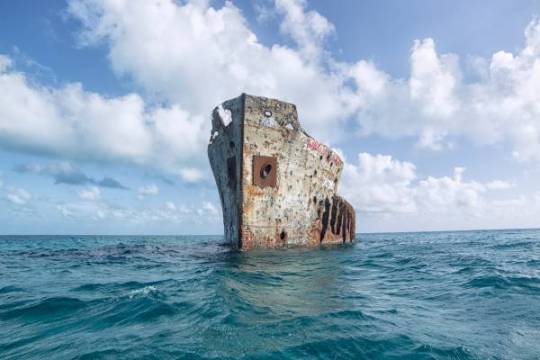
Is the boat still there do you know?
WIEDERHORN: As far as I know.
Amazing. The other key element of the film is Richard Einhorn’s minimalist music. Was Richard your choice or was be brought to you?
WIEDERHORN: Richard was also at Columbia and he was studying with a professor whose specialty was electronic music. So I went to the department head and said I’m looking for somebody who can do electronics for a horror movie score and Richard was one of the people who they recommended and we sat down and talked. I thought he would do a terrific job and I think he did. I think that the movie owes much to its music.
It sure does and you used Richard again for “EYES OF A STRANGER as well didn’t you?
WIEDERHORN: Yep and then used him again for the last film I made called A HOUSE IN THE HILLS
He went on to quite an illustrious career as a composer…
WIEDERHORN: He’s more of a serious classical modern composer and he’s done all orchestral score for JOAN OF ARC and he’s very active in New York. Richard was always my first choice for anything I was doing.
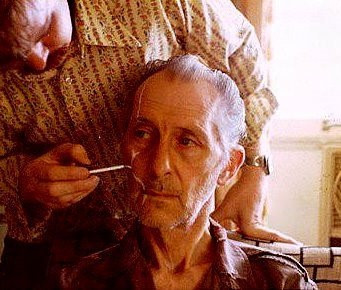
Now we’ve got to talk about Peter Cushing. This is, I think, one of his last notable horror roles…
WIEDERHORN: Ah yes, Peter. The horror movies that I actually knew were Hammer films. Why that is, I don’t know but I knew quite a number of the Hammer films and what appealed to me about them was that they really relied on story to some degree. But even more importantly, atmosphere and quality of acting. They were well produced and they were able to work on that level. So I very much had that in mind. We knew going on that we did not want to get into a lot of bloody special FX because we were making a low budget movie and it seemed to me that the way to succeed was not to become overly ambitious. To really make sure that what we were doing was something that we could in fact do. So the element that cost the least is all the elements of building suspense. I look at the film today and parts of it seem terribly slow to me but I understand and I see how at the time it worked in its way. It certainly worked because what I hear from people telling me about their experience of seeing the movie when they were 13 years old on late night TV is that when you’re channel surfing, this film stands out because it looks different. I personally really hated the locations because they were really difficult to work in terms of physical comfort. It was hot, it was humid and we would have to cover ourselves with mosquito repellent several times a day. There were sharks swimming in the water that we were working in Biscayne Bay so I think that worked for the film. I wasn’t the only one having a difficult time with the physical element that we were working it.
But back to Cushing, his nickname while making the Hammer films was “Props” Cushing because he would always find a way to work the surrounding props into his performance. Did you see any evidence of that in his work? Was he resourceful that way?
WIEDERHORN: The only prop I think he had was a cigarette holder that he used. He gave me a preview of the accent and I thought well it’s not really a German accent but it’s an accent so it’s fine. The great thing about Cushing was that he was very giving and very professional and even though he probably saw a lot of us walking into walls during the day, he was helpful and extended himself in ways that I certainly didn’t expect. In fact one day I was trying to figure out how to set up a shot on a beach somewhere and he was always available and he was always nearby, it’s not like between takes he went off and sat in his trailer, he was very available. So he’s watching me having a problem figuring things out and he gets my attention and motions me over and he says “Dear boy may I make a suggestion?” and I said “Sure Peter, what?” he says “I think if you move the camera a little bit off to the right and you lower the frame a bit you’ll get what you’re looking for and damn, he was right! I realized this is a guy who’s had more set experience than most of the directors he’s probably worked with and I knew that he was observant to what was going on. He was watching and so whenever we were ready, he was always ready. Whereas Carradine who came from a different discipline entirely and probably had been in four times as many movies as Cushing was in, he didn’t want to know about anything except what’s my line, where do I stand and when can I get the hell out of here.

Peter’s wife passed in 1970 and apparently those who worked with him around this period said he almost had a death wish. He always talked about her in a very morbid way. Was he a melancholy guy did you notice? Was that evident at all?
WIEDERHORN: I would say no. I do know about the wife but all I can tell you is that he was very open and frank about the fact that he would communicate with her through various mediums.
Have you seen any evidence of SHOCK WAVE’s influence in any other films or pop art?
WIEDERHORN: Well, people have pointed out to me that there is a whole collection of Nazi zombie movies now and I really have no idea if SHOCK WAVES had anything to do with that or not, that’s for other people to figure out. Other than that. I know it happens that there are references made to it. Somebody sent me a mystery show where SHOCK WAVES was a central part of the plot…
What about a remake? Since everything even borderline cult has been remade or is in the process of being remade, there must be somebody knocking on your door to try and do a remake of SHOCK WAVES…
WIEDERHORN: Yeah, I get that knock on the door a couple of times a year but frankly it’s usually ‘let us take an option and give us two years and we’ll see if we can get something done and I’ve been around that track many times and I figure if somebody is really serious about remaking it or doing a sequel in some way it will either happen or not. I don’t really have any interest in doing it myself.
This slideshow requires JavaScript.
Promotional and Advertising Material/Lobby Cards
SOUNDTRACK/SCORE
Richard Einhorn’s haunting experimental, analog-synth score — one of the earliest electronic compositions created for film — is often singled out for its creative use.
SHOCK WAVES LP (Waxwork Records) Original Richard Einhorn Score
youtube
CREDITS
Cast
Peter Cushing as SS Commander
Brooke Adams as Rose
John Carradine as Captain Ben Morris
Fred Buch as Chuck
Jack Davidson as Norman
Luke Halpin as Keith
J. Sidney as Beverly
Don Stout as Dobbs
Directed by Ken Wiederhorn
Produced by Reuben Trane
Written by
Ken Wiederhorn John Kent Harrison
REFERENCES and SOURCES
Delirium Issue 005
Shock Waves (1977) Retrospective SUMMARY The film opens as Rose is found drifting alone in a small rowboat. Two fishermen find it and pull her onto their own boat, barely alive and in a horrible state.
0 notes
Text
15 Anime Like Dr. Stone [Recommendations]

I am ten billion percent sure you have been compelled by the power of science and you’re looking for more anime like Dr. Stone. Well, you have come to the right place!

And for readers who have not watched Dr. Stone yet. Dr. Stone was one of the most popular anime of the Summer 2019 anime season, and for good reason. It was a fascinating show with a unique premise, interesting main cast, educational, insightful and fascinating to watch.
Summary
One fateful day, all of humanity was petrified by a blinding flash of light. After several millennia, high schooler Taiju awakens and finds himself lost in a world of statues. However, he's not alone! His science-loving friend Senku's been up and running for a few months and he's got a grand plan in mind—to kickstart civilization with the power of science!
By resetting the world, animes like Dr. Stone really allow us to explore human nature and the future of society. Can we be better? Is it possible to restore technological advances to what it is now? It's definitely a fun topic to watch.
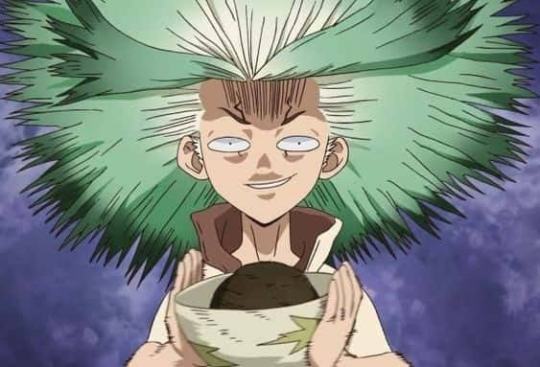
let's get started!
Anime Similar to Dr. Stone
15. Planetes

Studios: SunriseEpisodes: 26Aired: Fall 2003
If what you loved most about Dr. Stone was its commitment to scientific accuracy, you should give Planetes a try, it can be slow-paced but for your patience, it rewards you with amazing character development that sets Planetes apart from other anime.
Summary
Haunted by a space flight accident that claimed the life of his beloved wife, Yuri finds himself six years later as part of a team of debris cleaners on a vessel called the Toy Box charged with clearing space junk from space flight paths. The team consists of Hachimaki, a hotshot debris-man with a sailor’s affinity for the orbital ocean; Fee, a chain-smoking tomboy beauty with an abrasive edge; and Pops, a veteran orbital mechanic whose avuncular presence soothes the stress of the job.
https://youtu.be/IzfiI1jIGi8
Planetes features distinct realism in its storytelling, relatable characters, a genuine sense of humour and motivational dreams.
14. Are You Lost? (Sounan Desu ka?)

Studios: EzόlaEpisodes: 12Aired: Summer 2019
Dr. Stone and Are You Lost? both have characters that must survive the peril they are kept in and characters that know a lot and come up with ideas to help survive.
Summary
Four girls are stranded on a deserted island after surviving a plane crash. How can they survive? Because of a plane crash … starting today, we're spending the springtime of our lives on a desert island!! There's nothing here, so we have to make everything!! And eat everything!! (Ugh!) Check out our high-school-girl survival story of courage and knowledge. We're actually doing pretty well!
https://youtu.be/wwP8TQE2P0c
Are You Lost? doesn't take itself too seriously, it is a little more light-hearted, funny, fan service fueled and filled with cute girl anime. while with some of the same themes as Dr. Stone, Are You Lost? maybe a good choice.
13. Space Brothers

Studios: A-1 PicturesEpisodes: 99Aired: Spring 2012
Space Brothers and Dr. Stone are both animes about science and engineering. Both characters also dream of going to space and both plots are rooted in real science.
Summary
One night in 2006, when they were young, the two brothers Mutta (born 1993) and Hibito (born 1996) saw what appeared to be a UFO heading for the moon. They decided that night to both become astronauts and travel out into space. In 2025, Hibito has become an astronaut, and he’s going to go to the moon. Mutta ended up following a more traditional career path with an auto development company. However, Mutta just ruined his career through a violent altercation with his boss. Now, not only has he lost his job, he appears to be blacklisted in the entire industry. Maybe this is a rare opportunity for Mutta to once again chase his childhood dream and become an astronaut like his little brother!
https://youtu.be/ciS3fDqT1Vw
Space Brothers is a well-constructed anime that mixes a heartwarming story with delightful comedy and relatable characters to show the audience just how difficult it is to become an astronaut.
12. Moyashimon
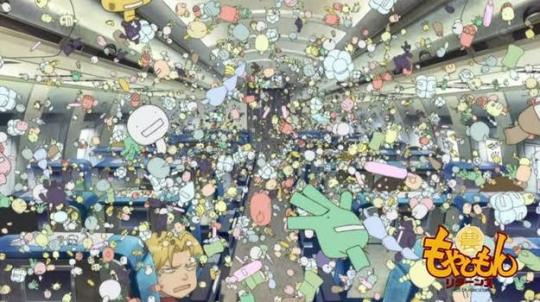
Studios: Telecom Animation Film, ShirogumiEpisodes: 11Aired: Fall 2007
Moyashimon like Dr. Stone is very educational and entertaining. It may not be survival based like Dr. Stone but most of the skills learnt in it, will be needed by Senku and Taiju if they are going to survive and kick start civilisation.
Summary
Meet Sawaki Tadayasu, second son of yeast preparation suppliers, who is forced to go to an agricultural university and continue the family business. He has the unique ability to see and communicate with microbes, and so he and his friend, Kei, are taken as students to the fermentation-process obsessed Itsuki-sensei. This anime follows Sawaki as he tries to make his way through university as discreetly as possible…which is pretty impossible if you’re as talented as he is.
https://youtu.be/CzKecuRFICw
Every now and again an anime comes along that is quirky, odd, and oftentimes underrated, Moyashimon is just such an anime.
11. Steins;Gate
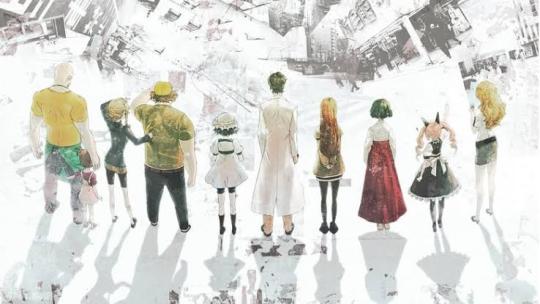
Studios: White FoxEpisodes: 24Aired: Spring 2011
Steins;Gate like Dr.Stone is a science fiction anime that anyone who loves this genre should be sure to give it a try.
Summary
The story of Steins;Gate takes place in Akihabara and is about a group of friends who have managed to customize their microwave into a device that can send text messages to the past. As they perform different experiments, an organization named SERN who has been doing their own research on time travel tracks them down and now the characters have to find a way to avoid being captured by them.
https://youtu.be/27OZc-ku6is
Steins;Gate was one of those animes that made me laugh, cry and really connect with our characters. It also made me think, and it rewarded my thoughts by having closure and clarity.
10. 7 Seeds

Studios: GonzoEpisodes: 12Aired: Spring 2019
After watching Dr. Stone you are probably now into series that depict people trying to survive in a post-apocalyptic future. Well, 7 Seeds is a much more realistic take on this narrative, with ordinary people trying to come to terms with the idea of everyone they knew and loved being dead while trying to survive in the wilderness.
Summary
Scientists had predicted this disaster, and in response, the leaders of every country met to develop a plan for human survival before the meteor hit. The Seven Seeds project was developed out of this meeting. Each country froze a number of young healthy people, which allowed them to survive the meteor. After the computer determined that Earth was once again safe for human life, it released them into the world. The Japanese government created five groups of survivors: Winter group, Spring group, Summer group A, Summer group B, and Fall group. Each group consisted of seven members and one guide. The guide carried small tubes of poison on their necks to allow them to end their lives if their situation became unbearable. The Japanese government prepared seven "Fuji" as refuges for the groups. In each Fuji, the group would find seeds and numerous books instructing them on survival in the wilderness.
https://youtu.be/7iCWs2HigSw
Much like Dr. Stone, 7 Seeds is all about learning to prevail in the wilderness without the benefits of modern technology. And it's definitely can be seen has a more realistic, less comedic take of Dr. Stone's end-of-humanity plot.
9. The Promised Neverland (Yakusoku no Neverland)

Studios: CloverWorksEpisodes: 12Aired: Winter 2019
The Promised Neverland like Dr. Stone is a survival anime though not completely the same, but with its psychological thriller element it keeps us at the edge of our seats.
Summary
Emma, Norman and Ray are the brightest kids at the Grace Field House orphanage. And under the care of the woman they refer to as “Mom,” all the kids have enjoyed a comfortable life. Good food, clean clothes and the perfect environment to learn—what more could an orphan ask for? One day, though, Emma and Norman uncover the dark truth of the outside world they are forbidden from seeing.
https://youtu.be/JIcjo7XVlOY
The Promised Neverland starts off cute and harmless but it turns out there is more than meets the eye in this anime, with its cliffhangers, extremely suspenseful, tense and heart-rending moments. It's definitely a must-watch.
8. No Game, No Life
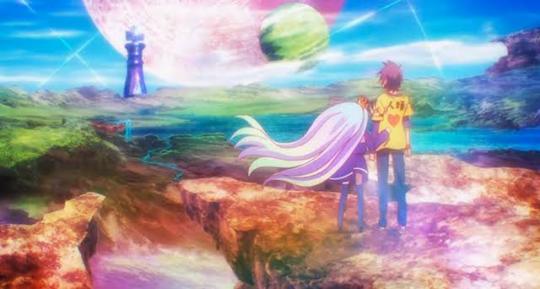
Studios: MadhouseEpisodes: 12Aired: Spring 2014
No Game, No Life is a beautifully colourful world, filled with wonder and brilliance. And like Dr. Stone, there is a lot of tactical thinking used by the characters which are very exciting to watch.
Summary
The internet is full of rumours about the Neet and Hikikomori genius gamer siblings Sora and Shiro. The two go as far as to refer to the world as a “shit game“, but then one day a young man calling himself “God“ summons them to a parallel universe. There, God has forbidden war, and “everything is to be settled with games“. Yes, even the national borders. Driven into a corner by other species, the ’human species’ is down to its last city. Can Sora and Shiro, these related failures of society, become the saviours of humankind in this parallel world?
https://youtu.be/fV7nGIUuyzA
No Game No Life is a brilliantly exciting masterpiece that challenges and excites viewers all at once. And just like Dr. Stone, you will find yourself needing to binge-watch the whole series if you decide to give it a try.
7. Cells at Work! (Hataraku Saibou)

Studios: David ProductionEpisodes: 13Aired: Summer 2018
After watching Dr. Stone, if you’re curious about science and biology, Cells at Work! Is definitely the show for you, it will satisfy and entertain you to no end, with its educational substance, comedic take and like Dr. Stone, it is an exciting take on the 'science is fun' trope.
Summary
Within the human body there is said to be approximately 60 million cells. White blood cells, red blood cells, platelets, macrophages, memory cells, killer T cells, natural killer cells, B cells, mast cells and many more! All these different cells work tirelessly within the body, never resting for a moment, at any time willing to resist invading foreign entities like germs and viruses to the bitter end! From Akane Shimizu, winner of Shounen Sirius’ Rookie Award, comes an informative tale about anthropomorthized cells!
https://youtu.be/HMXWvvjAJek
Cells at Work! is definitely different from a lot of anime shows, I mean how many shows are set inside the human body, humanizing all the cells and microscopic organisms within. It's definitely a must-watch if you liked Dr. Stone.
6. Astra Lost in Space (Kanata no Astra)
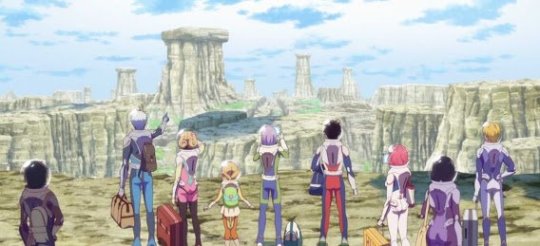
Studios: LercheEpisodes: 12Aired: Summer 2019
Kanata no Astra is definitely an underrated anime, looks can be deceiving and that's how this anime feels at first glance but it's a real gem and like Dr. Stone is a whole new breath of fresh air.
Summary
The year is 2061 when space travel is now possible and commercially viable, and the students of Caird High School embark on their Planet Camp. But soon after Group B5 arrived at their planetary campsite, a mysterious and unforeseen sentient light sphere warps its 9 members into outer space, stranding them 5012 light-years away from their home planet. With the discovery of an old, unmanned spaceship nearby, the students must stay strong, manage their limited resources and remain united in the darkness of space, so that all of them can survive their long and likely perilous trek back home aboard the Astra.
https://youtu.be/wD9o_8UjOvg
Kanata no Astra is a really decent anime, with a lot of mystery, logic and survival. Each element is done in a reasonable and accurate way like Dr. Stone, even the humour and drama aspects are well balanced and perfectly timed.
5. From the New World (Shinsekai Yori)
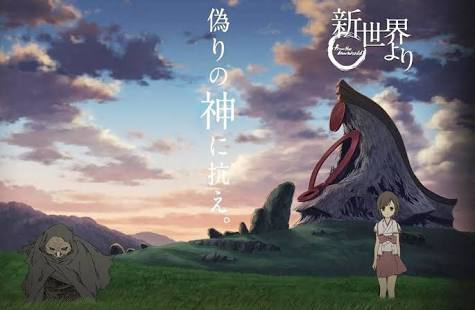
Studios: A-1 Pictures Episodes: 25Aired: Fall 2012
From the New World is like Dr. Stone just a lot darker and with a more serious tone, looking at how humanity has survived its destruction and rebuilt society. Asking the big questions what is yourself? society? and the importance of humanity?
Summary
The story is set in Japan a millennium from now. Five children — the protagonist Saki, Satoru, Maria, Mamoru, and Shun — have been born and raised in a tranquil town that can be described as a utopia, overflowing with water and green foliage. The world is ruled by people who have the “cursed power“ or the “gods’ power“ of telekinesis. After a certain incident, Saki and the others come to realize the true nature of their world. Before long, they learn everything, including the bloody history that brought humanity to this state. The five throw themselves into life-threatening adventure, fighting to protect friends and a world on the brink of collapse.
https://youtu.be/hJn3FNPoY5A
From the New World is a slow-paced anime but if you are patient with it, it's an amazing and thought-provoking anime that you will be glad you watched.
4. Silver Spoon (Gin no Saji)

Studios: A-1 PicturesEpisodes: 11Aired: Summer 2012
When I started watching Silver Spoon, like Dr. Stone I had my reservations thinking it would just be another fun little slice of life anime but it was much more.
Summary
Yugo Hachiken aspires to live separated from his family, so he takes the initiative by enrolling in an agriculture school. He thinks, with his talent in studying, no problems will arise no matter what kind of school he attends. He is quickly proven wrong. Raised as a city boy, he is forced to uncover the inconvenient truth about agricultural life. Enjoy the story of Hachiken, as he tries to keep up with his new friends, farmers’ heirs, who are already accustomed to the harsh world of farming. The story of a sweat, tear, and mud-stained youth begins!
https://youtu.be/b-yCzcYqH5E
Silver Spoon like Dr. Stone is the perfect example of an anime that encourages us to believe in our abilities to set our own path and with hard work and teamwork, we can overcome hardship.
3. Death Note

Studios: MadhouseEpisodes: 37Aired: Fall 2006
When Tsukasa Shishiou reveals his intention to revive only the young, destroy the petrified adults and leave society in the Stone Age, Dr. Stone started to remind me a lot of Death Note. With the strong rivalry between our protagonist and rival, the way they used their intellect to get things done, outsmarting the rest of the cast or just the lengths they went to achieve their dreams.
Summary
An overachieving 12th grader, Yagami Light is an aspiring young man who seems destined for success. Unfortunately, his daily habits bore his incredible intelligence. So when a strange black notebook falls from the heavens during his class, it isn’t long before he takes it for himself. In his room, he finds, to his horror/fascination, that the Death Note is real, and owned by Ryuk, a Shinigami (Death God). Any person’s name written in the Death Note will die in 40 seconds.... without fail. With this supposed gift of God, Light swears upon his grave that he will ’cleanse’ the world of the evil and needless people that inhabit it, thus creating a utopia for all. With the world’s greatest detective, L, hot on his tail, will Light’s ideals prove too fantastic to realize, or will he succeed bringing justice?
https://youtu.be/Vt_3c8BgxV4
Death Note is definitely one of the best anime series of all time.
2. Ascendance of a Bookworm
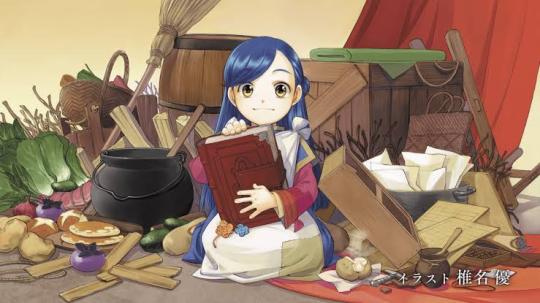
Studios: Ajia-DoEpisodes: 14Aired: Fall 2019
Ascendance of a Bookworm starts off like Dr. Stone the main character is removed from her world and brought back to a world that is primitive to her own. Using science and history knowledge from her time period to adapt and influence the new world and its native inhabitants.
Summary
Reino, a book-loving college student who just got her Librarian certification and was just hired to be the librarian of a large university library. Just before graduating and entering the job of her dreams, she was killed by a massive earthquake crushing her underneath a pile of her own books. Wishing for reincarnation in order to read evermore, where she got reincarnated to was a world with a low literacy rate and very few books, limited only to the nobility of the world. As she reincarnated as the daughter of a lowly soldier, no matter how much she wants to read there is no way there are any books around. If there are no books then what do you do? Why you make them yourself of course. What her goal is, to become the librarian of a library! In order to live a life surrounded by books, she starts with making books.
https://youtu.be/KfPyxG-ZbFM
Ascendance of a Bookworm is Dr. Stone for viewers who want a slow-paced plot, that explores more of the ordinary life of a bookworm. It's a beautiful isekai anime I recommend you give a try.
Honourable Mentions
Tokyo Magnitude 8.0

Studios: Bones, Kinema CitrusEpisodes: 11Aired: Summer 2009
Uninhabited Planet Survive! (Mujin Wakusei Survive)

Studios: Madhouse, Telecom Animation FilmEpisodes: 52Aired: Fall 2003
Kemurikusa
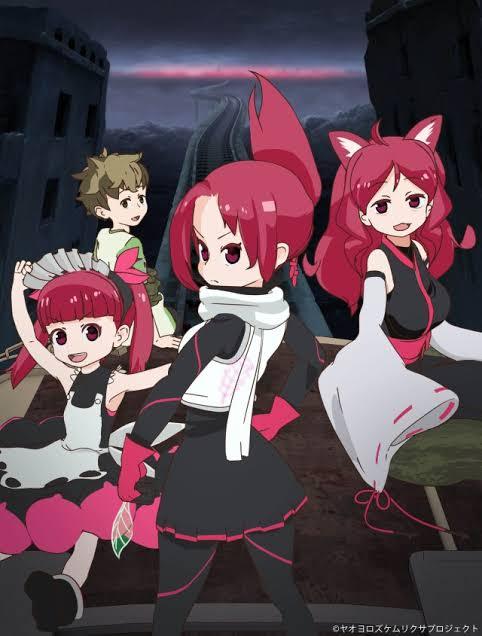
Studios: YaoyorozuEpisodes: 12Aired: Winter 2019
Nausicaä of the Valley of the Wind
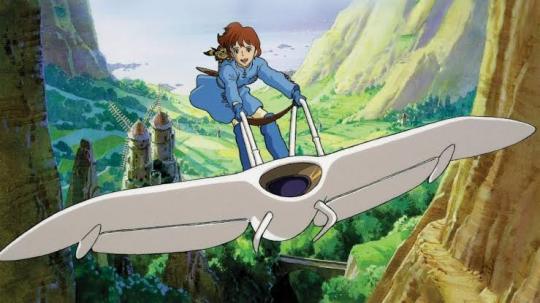
Studios: Studio Hibari, TopcraftEpisodes: 1Aired: Winter 1984
The Disastrous Life of Saiki K.

Studios: J.C.Staff, Egg FirmEpisodes: 120Aired: Summer 2016
Jyu-Oh-Sei: Planet of the Beast King

Studios: BonesEpisodes: 11Aired: Spring 2006
1. Girl’s Last Tour
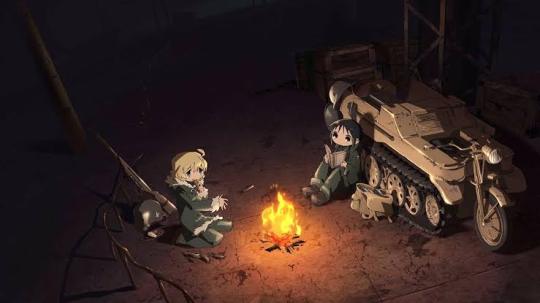
Studios: White FoxEpisodes: 12Aired: Fall 2017
Girl’s Last Tour is quite similar to Dr. Stone in both plots happen in an apocalyptic world, where our characters survive the day-to-day hostilities of their environments.
Summary
Civilization is dead, but Chito and Yuuri are still alive. So they hop aboard their beloved Kettenkrad motorbike and aimlessly wander the ruins of the world they once knew. Day after hopeless day, they look for their next meal and fuel for their ride. But as long as the two are together, even an existence as bleak as theirs has a ray or two of sunshine in it, whether they're sucking down their fill of soup or hunting for machine parts to tinker with. For two girls in a world full of nothing, the experiences and feelings the two shares give them something to live for…
https://youtu.be/SuVVs4giZrI
Girls’ Last Tour is lighthearted and emotionally; it excels through simplicity and thoughtfulness. Making it one Of best shows of its year.
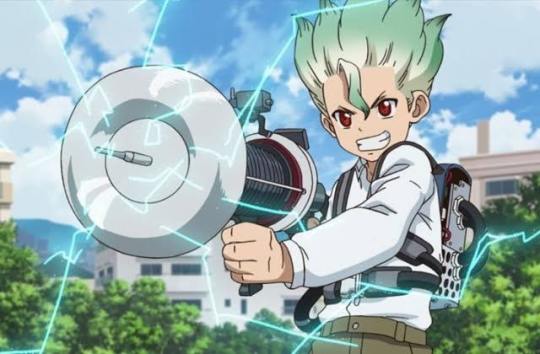
science!!!!!
Well, that's my list. Do you think there is any anime I missed let me know in the comments section below?
Till next time stay safe.
Read the full article
#7Seeds#AreYouLost?(SounanDesuka?)#AscendanceofaBookworm#AstraLostinSpace#CellsatWork!(HatarakuSaibou)#DeathNote#Dr.Stone#FromtheNewWorld(ShinsekaiYori)#Girl’sLastTour#Jyu-Oh-Sei:PlanetoftheBeastKing#Kemurikusa#Moyashimon:TalesofAgriculture#NausicaäoftheValleyoftheWind#NoGame#NoLife#Planetes#SilverSpoon(GinnoSaji)#SpaceBrothers#Steins;Gate#TheDisastrousLifeofSaikiK.#ThePromisedNeverland#TokyoMagnitude8.0#UninhabitedPlanetSurvive!
1 note
·
View note
Text
From Navpaktos to Ithaca and Cephalonia.
July 15th …
Following on from my last blog…… which was quite some time ago.!!! …we had just welcomed our dear friends Gaybrielle and John on board along with our four gorgeous girls – Rebecca, Emily, Nikita and Lucy.
The new “crew” had joined us in Navpaktos, which is in the Gulf of Corinth, where a driver had delivered them from Athens. So after a fabulous evening of celebrations we headed out of the tiny port the following morning. Navpaktos is such a beautiful little harbour, and was ideal for stocking up the boat and preparing for the next leg of our journey.

Awanui parked inside the tiny port of Navpaktos.
Once under the Rion-Antirion Bridge, we were in the Ionian Sea and on our way to the island of Ithaca. This impressive bridge is fairly new, and one that the Greeks are very proud of.
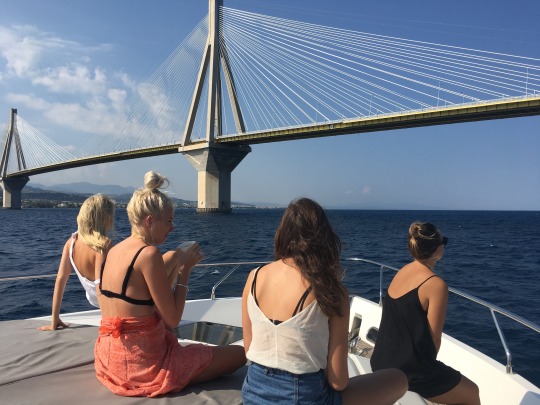
The girls admiring the beauty of the Rion-Antirion Bridge.
One of our generators had been loosing power and we needed an electrical component. We made our way the town of Vathy on the island of Ithaca, as we thought the part was being delivered to us there.

Les girls on the bow with Vathy ahead of us.
We didn’t think the town of Vathy had that much appeal, but we walked around to explore it and later Gaybrielle and I took the E-bikes and went to the top of the hill behind the town to see a bit more of the area.
The E-bikes have been fabulous to have on the boat as it means you can go that little bit further when exploring and of course with a lot less effort (and much more fun) which in the heat of the Greek Summer is very appealing.
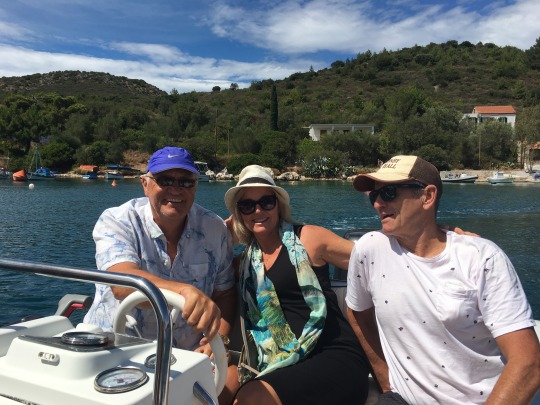
Chris, Gaybrielle and John - on our way to a taverna for lunch.
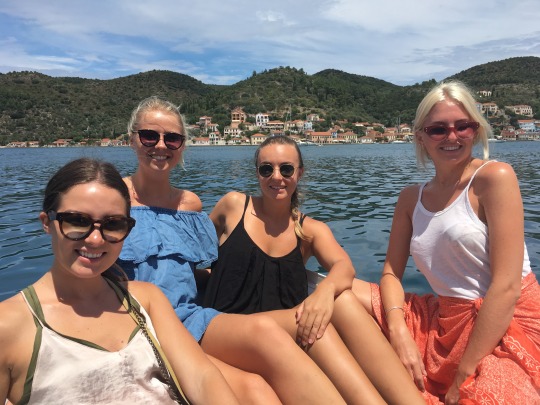
Nikita, Emily, Bex and Lucy.
That afternoon we took the tender further up the inlet and found a delightful waterside taverna, with a thatched roof under the shade of some trees, and had a delicious lunch.
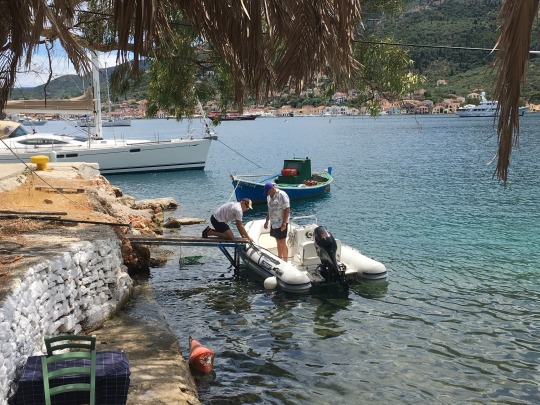
Chris and John securing the tender beside the Taverna.
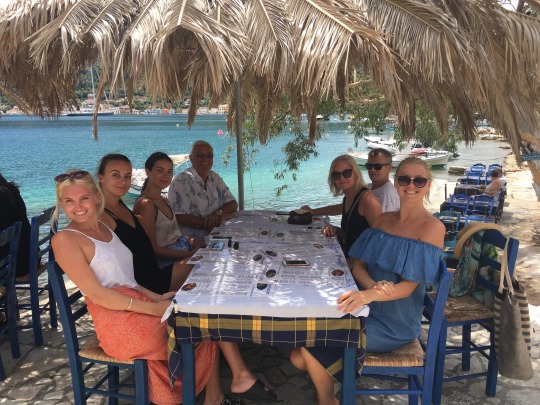
Our happy group of travellers ready for lunch.

Later - looking lovely with a their Asperols.

YiaMas ! Cheers !
It was a huge coincidence when we discovered that a past boyfriend of Rebecca’s, Devon, was crewing on a beautiful yacht that just happened to be anchored in the bay. He and the Captain stopped by Awanui in their tender for a chat briefly, as they were preparing to leave for Malta. It was great to see Devon looking so well, and loving his job – who wouldn’t ?!
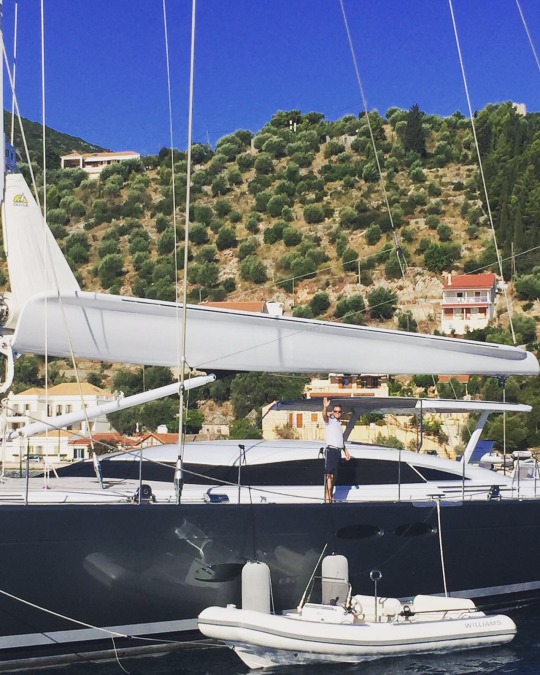
Bye Devon - love your yacht!

John and Chris arriving back to the boat with the groceries.
Our next stop was Cephalonia, the largest island in the Ionian. It is also the island where Louis de Bernier’s novel ‘Captain Corelli’s Mandolin’ was set, an old favourite book of mine about the Italian occupation of the island in the Second World War. Pity the Hollywood film was such a disappointment, but the book is an absolute must read.

Heading in to Fiskardho.
Arriving at the north-eastern tip of the island we pulled into the picture-postcard enclosed harbour of Fiskardho. It is one of the few places on the island to have survived the massive earthquake of 1953 (when over 90% of the buildings on the island were destroyed), so the town around the port has retained its Italianate architecture.
Captain Kosta backed us in to a great anchorage to the side of the township, where the rocky coast curved around to an old lighthouse on the point. We sat in pristine water, and at our stern was a path that lead along the waterfront straight into town. It meant we could swim off the boat and come and go as we pleased, which suited everyone perfectly.

Chris securing a stern line to the trees.

Yay - swimming off the back of the boat - heaven!
After a cooling dip when we arrived, we walked in to check out the town. The beautiful 19th century houses are plastered in soft pastel shades with their wrought iron balconies bursting with bougainvillea. The tavernas and shops, with their awnings and umbrellas lining the dockside – all made for a very picturesque scene. We were really taken with the place, and later that evening we went back in to have another wander around before dinner.

Me and my girl - heading into Fiskardho.

Had to include this one - the gals in white.
We ended up staying here another day and night, as the generator was being fixed, and it was a perfect anchorage. We went for a long walk in the morning past the ruins of an ancient Norman church on the northern side of the bay. Just on from here are several beautiful little holiday rentals right on the waters edge, which I thought could one day be of interest. Later we paddled over to them for a view from the sea. A very lovely spot.
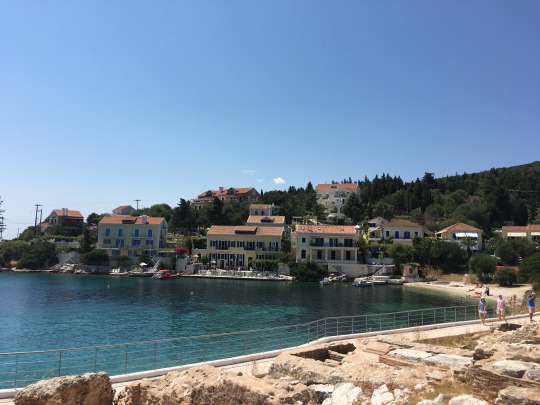
The lemon coloured boutique hotel in the middle was my pick.
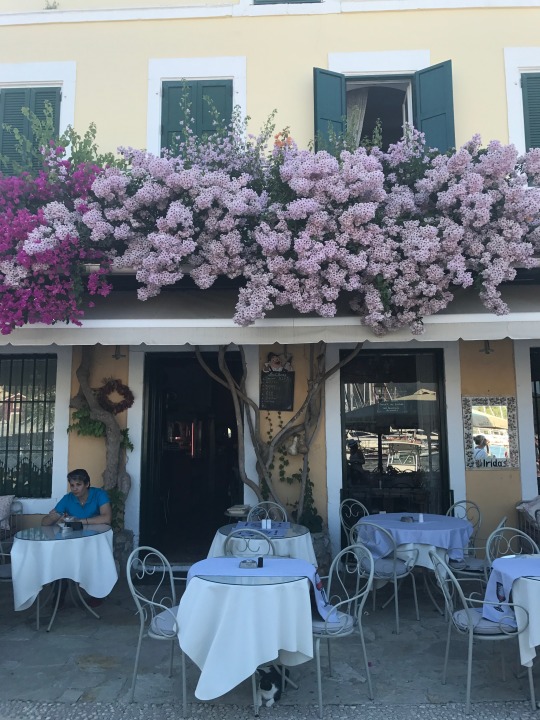
We couldn’t believe the colour of these bouganvilia

Great selfie of us all - back in town for the evening.
The Boat Broker, Nikos, who sold us Awanui, holidays in Fiskardho, so we made contact with him and met up later for a drink in town. He and his wife Irene insisted that we come for breakfast the next morning to see their little house up on the hillside amongst the trees.
Nikos picked us up the next morning and we drove around a couple of bays and then up into the hills behind the town – looking down through the Cyprus trees and olives to the sea below. It was a delightful morning, as we were proudly shown around their charming home, that was once his mothers’.

The entrance to Nikos and Irene’s house - through the courtyard.
He and Irene had lovingly restored the house and spend all their summers here. We were even shown how the stone terrace acts as a water catchment area, as well as the roof, with huge concrete holding tanks under the terrace. Water on the island being extremely precious, it was a source of pride and esteem to have a lot of water storage capacity.
That afternoon we left Fiskardho and headed south down the eastern side of Cephalonia where the hills are covered with Cypress and Pines right down to the rocky shoreline. The water in the many bays along this coast is deep and gin clear, and we ended up spendng the day in the bay of Ag Sofia, before heading into the port of Eufimia for the night.

Rebecca trying out the new face mask - they are amazing!
We pulled in to the dock at Eufimia about 5 pm, as the heat was reaching its crescendo, and noticed the bar opposite had an inviting sign announcing happy hour cocktails – great idea!
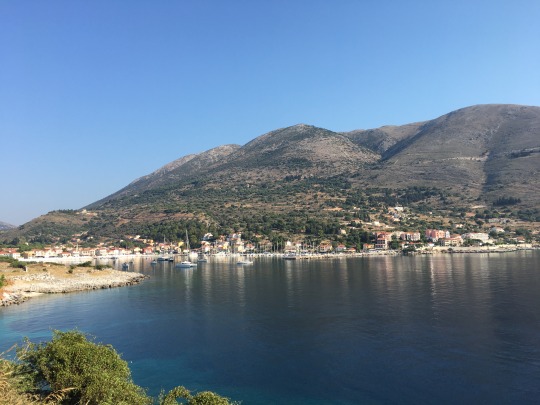
The town of Eufimia.
What followed was an hour sitting under the shade of an umbrella, sipping mojitos and being totally entertained by the drama unfolding in front of us, where many boats were coming in to tie up just as a stiff sea breeze blew in. One in particular was an older Frenchman who was totally out of control. He must have tried a dozen times to drop his forward anchor and back his launch in to the dock at great speed. He seemed unable to steer his vessel, swerving one way and then, over compensating, and swerving the other. Careering into boats either side, causing a flurry of activity aboard as Boaties rushed to fend off, while yelling their advice. His forward anchor never held, so up it would come before starting again. In the end the Port Police arrived and insisted that he abort his efforts, then directed him to an entirely different part of the port usually reserved for the fishing boats, and an easier approach. We raised a toast to Captain Kostas who is an expert in docking, and takes all that stress away from us.
One of the other memorable moments in Eufimia, was later that night after our meal as we walked back to the boat we joined a small crowd and watched a very talented young tight-rope-walker/come juggler, who was accompanied by a 5 piece band. So Eufimia will be remembered mainly for the entertainment it provided.

Walking up above the town in the heat at 8 am.
After a good walk in the morning, we were off again across to the southern end of Ithaca, which sits snuggly along the eastern side of Cephalonia. We tucked ourselves into the sheltered little bay of Plakis, that we later re-named “Goat Bay’. There were so many goats wandering around the hillside and lying in the shade of small caves and under ledges along the shore, later coming down in the cool of the evening to lick the salt from the rocks.
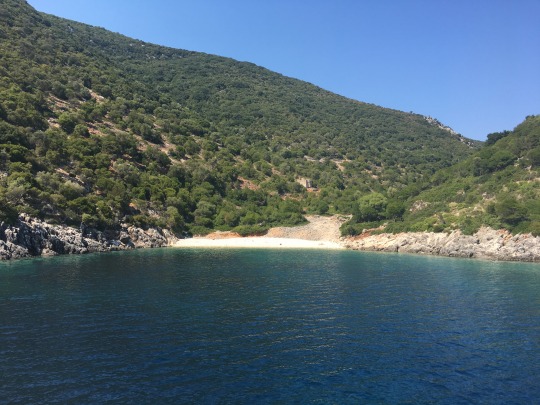
“Goat Bay”
It was a magical, secluded little bay that we thought we all had to ourselves until a huge Gullet muscled its way in front to us! We were both there for the night. This was one of the few nights that we free anchored, and cooked up a delicious dinner on board. Divine.
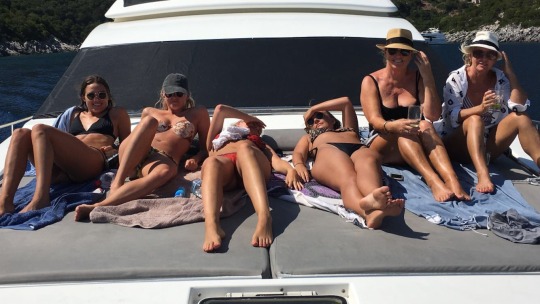
All the girls on the bow in “Goat Bay”

Just hanging around - chilling.

...And trying to do yoga on the paddle boards.
After a very pleasant lazy day in Goat Bay we motored off and headed down to the southern end of Cephalonia. It was a Saturday and the girls had a flight from Argostoli the next day, and Mark and Vanessa were arriving later that night, so we had to make our way around the Southern end of the island and back up to the Port and into the main town of Argostoli, which is close to the airport.
We broke the trip by staying a night in the ferry harbour of Poros on the way. Not much to say about Poros. Except that we were happy to head off early in the morning to find a good swimming spot. We spent our last day with the girls anchored off the white cliffs at Pelagos in turquoise water under a burning blue sky.

Making a rather big splash!

The last day with Bex on board - Its been so much FUN.
Argostoli is the capital and principal harbour of the island, and was totally flattened in the 1953 earthquake. So the present city was rebuilt after this event. We berthed at the cruise ship pier as it is close to the town, and the smaller marina is pretty grim. So it was from here that the taxi arrived to take our girls away to the airport and on to their next fabulous adventure. They were heading back to the Cyclades to stay on Kea, before heading down to Mykonos where they all had far too much fun!

Waving them off from Argostoli - to the aiport - and on to Kea.
We waved them off, cleaned up the boat a bit, then went into the bustling town to buy provisions and check out the shops. It was later this same night that we welcomed the exhausted Mark and Vanessa aboard after their long journey from NZ, and then on to the Northern end of Cephalonia.
To be continued………
0 notes
Text
Sicilian Wine
https://j.mp/3yWGz0u
If the idea of walking up to a sage-scented ocean breeze sounds alluring, what about sipping coffee in an ancient fruit orchard while looking out over the crystal-blue Mediterranean? The Sicilian countryside seems to exist in another timeline. A magical place, to be sure, but can any place be a paradise for long? The only thing rarer than a GPS signal is a street sign. The shepherds and their sheep are quaint only the first time they block the road for twenty minutes. And what to do with that herd of cows that keeps breaking into your pasture, trampling your garden? Table of contentsA Short History of Wine in SicilySicilian Wine Regions: Province of RagusaThe Wines of Cerasuolo di VittoriaFeatured Ragusa Wineries: COS and Arianna OcchipintiSicilian Wine Regions: Province of TrapaniThe Wines of MarsalaSicilian Wine Regions: CataniaThe Wines of Etna A Short History of Wine in Sicily In the 8th Century BCE, Greek colonists became the Island’s first winemakers. Ancient texts describe Dionysus, the God of Wine, dancing as he planted the first grapevine in Sicily. Thanks to archeologists, we know these vineyards were located in the black hills under Mt. Aetna, a still-active volcano. In time, the Romans conquered the island, and that opened Sicily to the world. These wines were traded as far away as modern-day France and Germany. Production boomed. A notable ancient wine was Marsala, a fortified wine made on the western coast. A British merchant popularized the wine in the 18th century and soon compared it to Portugal’s Porto wines. The history of Sicilian wines would likely have continued apace. Then, however, in the late 19th century, an invasive parasite invaded the vineyards, killing most vines. This was the Phylloxera epidemic, and it drew a stark red line between the 19th century and today. It was only in the last half of the 20th Century when Sicily recovered its winemaking mojo, thanks to wineries like COS, Planeta, and Ceuso. Sicilian Wine Regions: Province of Ragusa Ragusa is the most southernmost province of Sicily, situated in the Val di Noto. It is a place of rolling hills, dramatic shorelines, and ancient towns. The region’s namesake city dates back to Greek times but was destroyed by the earthquake. It was and completely rebuilt in the baroque style in the 17th century. Other important towns include Scicli and Modica. Like Ragusa, many of the buildings are in the Late Baroque style. The other key component of these cities is their culinary and winemaking traditions. The Wines of Cerasuolo di Vittoria Cerasuolo di Vittoria is the most important appellation in Ragusa, dating back to the 7th century BCE. The name refers to an elegant refreshing style of wine. Cerasuolo refers to the light red hue of the wine. Vittoria is a city west of Ragusa and the center of the wine region. The wine is an odd –but brilliant– coupling of two native varietals, Nero d’Avola and Frappato. Nero is an intense hulk-ish red that tends to produce angry and magnetic wines. Frappato makes a light, nearly pink wine that is all about roses and ocean breezes. The wine produced within an even more restricted area will have the appellation’s term “Classico” appended. The region was awarded DOC status in 1974. In 2005, it was upgraded to DOCG, the highest level of classification in Italian wine. Featured Ragusa Wineries: COS and Arianna Occhipinti COS is the acronym of the surnames of the Winery’s three founders: Giambattista Cilia, Giusto Occhipinti, and Cirino Strano. In 1980, these young men leased a small winery and vineyard from a family member. The first vintage produced a meager 1470 bottles. Year by year, the volume increased, but so did the quality and international acclaim. Then, by 2000, they brought back an ancient Sicilian tradition: using amphorae (clay vessels buried underground) to age their wines. It’s a technique that has now been adopted across all of Italy. Their finest Cerasuolo di Vittoria is the “Delle Fontane”. It is red ruby in color, with aromas of cherry, blackberry, and currant. The flavors of fresh roses and toasted spice are alluring, and the palate is fresh, elegant, and Mediterranean. The Arianna Occhipinti story is a more recent addition to the Sicilian wine scene. Arianna is the niece of Giusto Occhipinti, of COS fame. She opened her eponymously named winery in 2004 in Ragusa. What began as a tiny one-hectare operation now spans over 22 hectares, mostly Nero d’Avola and Frappato, Albanello and Zibibbo, two local white varieties. Her top-level is the Cerasuolo di Vittoria ‘Grotte Alte’ i s aged a minimum of 32 months in massive Slavonian oak buttes. The wine is an intense ruby red color with garnet shades. The nose is fragrant, with details of sea spray, sour cherries, and oriental spices. The palate is intense and elegant, soft and round, with a persistent and salty aromatic finish. Sicilian Wine Regions: Province of Trapani Trapani is a Bronze-age commune that is still thriving in the modern era. Located on the island’s west coast, it has been a major port for two Sicilian products, wine, and salt, since the beginning of recorded history. A naturally protected inlet, Trapani has the capacity to enforce naval superiority over a vast section of the Mediterranean. Over the past two thousand years, this sickle-shaped port has been the focus of countless wars and occupations. From the Punic Wars of Ancient Rome to World War Two, this port drew dozens of ancient cultures into Sicily, only to be absorbed into the island’s culture. Phoenicians, Arabs, Romans, Normans, and Spaniards have contributed to Sicily’s food and wine traditions. The Wines of Marsala Long before a wine bore its name, Marsala is an ancient city built on the ruins of an even more ancient city, Lilybaeum. The town’s economy, like much of Trapani, was based on their salt ponds and vineyards. By the 17th Century, the world’s economies were recovering from the centuries-long medieval depression. Times were good, but the local winemakers had a problem: a growing wine market was growing, but their white wines spoiled too quickly to ship. So they had started using large oak barrels to store the wine, which helped. Then they heard of a new technique developed in Portugal: fortify the wine by adding spirit to the fermenting must. At about this same time, bottled wines became a status symbol. So a bottle of new wine was born. The wine rose to fame in the early part of the 20th century, only to come crashing down just as quickly. Marsala was the only wine available during Prohibition (doctors were allowed to prescribe it). As a result, it wasn’t too long before there was more counterfeit Marsala than real. That fact, sadly, continues through today: most Marsala in American shops are pale imitations. To seek our true Marsala, look for the term “Superiore Riserva” on the label. Your mind will be blown with the flavors of toasted almonds, fresh figs, and chocolate-coated raisins. They make for great aperitifs. Sicilian Wine Regions: Catania Catania is defined by the heart of Sicily: Mount Etna, the still-active volcano that the entire island is balanced upon. Located on the Northeastern shore, the region is famous for its black volcanic soils. Its buildings are built of the same stone, and its roofs are blackened by centuries of volcanic plumes. The largest city is also named Catania and has been rebuilt dozens of times since its founding in 729 BCE. But, unfortunately, the town has been destroyed by lava flows and earthquakes, wars, and social unrest. How did a region so unlucky survive so long? It comes down to the lava flows: they are the cause of so much despair, but also why Catania thrives. Over centuries, lava rocks evolve into black volcanic soils that are fertile and life-sustaining. They are why Sicily is an agricultural wonderland. travel to Italy – panorama with villages on green hills and Etna volcano in Sicily The Wines of Etna The specialness of this region can be inferred by the fact that it was the first recognized wine appellation in Sicily (it earned its DOC in 1968), a full nine months before Marsala. This region’s essential red grape varietal is Nerello Mascalese, crafting a complex but wild wine that often feels like a confluence of wild-grown fruit and a core of intense minerality. The whites of the region include native varieties include Carricante and Catarratto. The former produces light and ethereal wines that are simple and perfect with summer fish dishes. Cattaratto is lush and intense, going toward tropical fruit infused with tarragon. This is also a place that attracts crazy European winemakers with a zeal for eccentricity. Just spend a few minutes with the wines of Frank Cornelissen, and you’ll understand. By Keith Wallace https://j.mp/3yWGz0u
0 notes
Text
Sicilian Wine
https://j.mp/3yWGz0u
If the idea of walking up to a sage-scented ocean breeze sounds alluring, what about sipping coffee in an ancient fruit orchard while looking out over the crystal-blue Mediterranean? The Sicilian countryside seems to exist in another timeline. A magical place, to be sure, but can any place be a paradise for long? The only thing rarer than a GPS signal is a street sign. The shepherds and their sheep are quaint only the first time they block the road for twenty minutes. And what to do with that herd of cows that keeps breaking into your pasture, trampling your garden? Table of contentsA Short History of Wine in SicilySicilian Wine Regions: Province of RagusaThe Wines of Cerasuolo di VittoriaFeatured Ragusa Wineries: COS and Arianna OcchipintiSicilian Wine Regions: Province of TrapaniThe Wines of MarsalaSicilian Wine Regions: CataniaThe Wines of Etna A Short History of Wine in Sicily In the 8th Century BCE, Greek colonists became the Island’s first winemakers. Ancient texts describe Dionysus, the God of Wine, dancing as he planted the first grapevine in Sicily. Thanks to archeologists, we know these vineyards were located in the black hills under Mt. Aetna, a still-active volcano. In time, the Romans conquered the island, and that opened Sicily to the world. These wines were traded as far away as modern-day France and Germany. Production boomed. A notable ancient wine was Marsala, a fortified wine made on the western coast. A British merchant popularized the wine in the 18th century and soon compared it to Portugal’s Porto wines. The history of Sicilian wines would likely have continued apace. Then, however, in the late 19th century, an invasive parasite invaded the vineyards, killing most vines. This was the Phylloxera epidemic, and it drew a stark red line between the 19th century and today. It was only in the last half of the 20th Century when Sicily recovered its winemaking mojo, thanks to wineries like COS, Planeta, and Ceuso. Sicilian Wine Regions: Province of Ragusa Ragusa is the most southernmost province of Sicily, situated in the Val di Noto. It is a place of rolling hills, dramatic shorelines, and ancient towns. The region’s namesake city dates back to Greek times but was destroyed by the earthquake. It was and completely rebuilt in the baroque style in the 17th century. Other important towns include Scicli and Modica. Like Ragusa, many of the buildings are in the Late Baroque style. The other key component of these cities is their culinary and winemaking traditions. The Wines of Cerasuolo di Vittoria Cerasuolo di Vittoria is the most important appellation in Ragusa, dating back to the 7th century BCE. The name refers to an elegant refreshing style of wine. Cerasuolo refers to the light red hue of the wine. Vittoria is a city west of Ragusa and the center of the wine region. The wine is an odd –but brilliant– coupling of two native varietals, Nero d’Avola and Frappato. Nero is an intense hulk-ish red that tends to produce angry and magnetic wines. Frappato makes a light, nearly pink wine that is all about roses and ocean breezes. The wine produced within an even more restricted area will have the appellation’s term “Classico” appended. The region was awarded DOC status in 1974. In 2005, it was upgraded to DOCG, the highest level of classification in Italian wine. Featured Ragusa Wineries: COS and Arianna Occhipinti COS is the acronym of the surnames of the Winery’s three founders: Giambattista Cilia, Giusto Occhipinti, and Cirino Strano. In 1980, these young men leased a small winery and vineyard from a family member. The first vintage produced a meager 1470 bottles. Year by year, the volume increased, but so did the quality and international acclaim. Then, by 2000, they brought back an ancient Sicilian tradition: using amphorae (clay vessels buried underground) to age their wines. It’s a technique that has now been adopted across all of Italy. Their finest Cerasuolo di Vittoria is the “Delle Fontane”. It is red ruby in color, with aromas of cherry, blackberry, and currant. The flavors of fresh roses and toasted spice are alluring, and the palate is fresh, elegant, and Mediterranean. The Arianna Occhipinti story is a more recent addition to the Sicilian wine scene. Arianna is the niece of Giusto Occhipinti, of COS fame. She opened her eponymously named winery in 2004 in Ragusa. What began as a tiny one-hectare operation now spans over 22 hectares, mostly Nero d’Avola and Frappato, Albanello and Zibibbo, two local white varieties. Her top-level is the Cerasuolo di Vittoria ‘Grotte Alte’ i s aged a minimum of 32 months in massive Slavonian oak buttes. The wine is an intense ruby red color with garnet shades. The nose is fragrant, with details of sea spray, sour cherries, and oriental spices. The palate is intense and elegant, soft and round, with a persistent and salty aromatic finish. Sicilian Wine Regions: Province of Trapani Trapani is a Bronze-age commune that is still thriving in the modern era. Located on the island’s west coast, it has been a major port for two Sicilian products, wine, and salt, since the beginning of recorded history. A naturally protected inlet, Trapani has the capacity to enforce naval superiority over a vast section of the Mediterranean. Over the past two thousand years, this sickle-shaped port has been the focus of countless wars and occupations. From the Punic Wars of Ancient Rome to World War Two, this port drew dozens of ancient cultures into Sicily, only to be absorbed into the island’s culture. Phoenicians, Arabs, Romans, Normans, and Spaniards have contributed to Sicily’s food and wine traditions. The Wines of Marsala Long before a wine bore its name, Marsala is an ancient city built on the ruins of an even more ancient city, Lilybaeum. The town’s economy, like much of Trapani, was based on their salt ponds and vineyards. By the 17th Century, the world’s economies were recovering from the centuries-long medieval depression. Times were good, but the local winemakers had a problem: a growing wine market was growing, but their white wines spoiled too quickly to ship. So they had started using large oak barrels to store the wine, which helped. Then they heard of a new technique developed in Portugal: fortify the wine by adding spirit to the fermenting must. At about this same time, bottled wines became a status symbol. So a bottle of new wine was born. The wine rose to fame in the early part of the 20th century, only to come crashing down just as quickly. Marsala was the only wine available during Prohibition (doctors were allowed to prescribe it). As a result, it wasn’t too long before there was more counterfeit Marsala than real. That fact, sadly, continues through today: most Marsala in American shops are pale imitations. To seek our true Marsala, look for the term “Superiore Riserva” on the label. Your mind will be blown with the flavors of toasted almonds, fresh figs, and chocolate-coated raisins. They make for great aperitifs. Sicilian Wine Regions: Catania Catania is defined by the heart of Sicily: Mount Etna, the still-active volcano that the entire island is balanced upon. Located on the Northeastern shore, the region is famous for its black volcanic soils. Its buildings are built of the same stone, and its roofs are blackened by centuries of volcanic plumes. The largest city is also named Catania and has been rebuilt dozens of times since its founding in 729 BCE. But, unfortunately, the town has been destroyed by lava flows and earthquakes, wars, and social unrest. How did a region so unlucky survive so long? It comes down to the lava flows: they are the cause of so much despair, but also why Catania thrives. Over centuries, lava rocks evolve into black volcanic soils that are fertile and life-sustaining. They are why Sicily is an agricultural wonderland. travel to Italy – panorama with villages on green hills and Etna volcano in Sicily The Wines of Etna The specialness of this region can be inferred by the fact that it was the first recognized wine appellation in Sicily (it earned its DOC in 1968), a full nine months before Marsala. This region’s essential red grape varietal is Nerello Mascalese, crafting a complex but wild wine that often feels like a confluence of wild-grown fruit and a core of intense minerality. The whites of the region include native varieties include Carricante and Catarratto. The former produces light and ethereal wines that are simple and perfect with summer fish dishes. Cattaratto is lush and intense, going toward tropical fruit infused with tarragon. This is also a place that attracts crazy European winemakers with a zeal for eccentricity. Just spend a few minutes with the wines of Frank Cornelissen, and you’ll understand. By Keith Wallace https://j.mp/3yWGz0u
0 notes
Text
Sicilian Wine
https://j.mp/3yWGz0u
Sicilian Wine - Keith Wallace - If the idea of walking up to a sage-scented ocean breeze sounds alluring, what about sipping coffee in an ancient fruit orchard while looking out over the crystal-blue Mediterranean? The Sicilian countryside seems to exist in another timeline. A magical place, to be sure, but can any place be a paradise for long? The only thing rarer than a GPS signal is a street sign. The shepherds and their sheep are quaint only the first time they block the road for twenty minutes. And what to do with that herd of cows that keeps breaking into your pasture, trampling your garden? Table of contentsA Short History of Wine in SicilySicilian Wine Regions: Province of RagusaThe Wines of Cerasuolo di VittoriaFeatured Ragusa Wineries: COS and Arianna OcchipintiSicilian Wine Regions: Province of TrapaniThe Wines of MarsalaSicilian Wine Regions: CataniaThe Wines of Etna A Short History of Wine in Sicily In the 8th Century BCE, Greek colonists became the Island’s first winemakers. Ancient texts describe Dionysus, the God of Wine, dancing as he planted the first grapevine in Sicily. Thanks to archeologists, we know these vineyards were located in the black hills under Mt. Aetna, a still-active volcano. In time, the Romans conquered the island, and that opened Sicily to the world. These wines were traded as far away as modern-day France and Germany. Production boomed. A notable ancient wine was Marsala, a fortified wine made on the western coast. A British merchant popularized the wine in the 18th century and soon compared it to Portugal’s Porto wines. The history of Sicilian wines would likely have continued apace. Then, however, in the late 19th century, an invasive parasite invaded the vineyards, killing most vines. This was the Phylloxera epidemic, and it drew a stark red line between the 19th century and today. It was only in the last half of the 20th Century when Sicily recovered its winemaking mojo, thanks to wineries like COS, Planeta, and Ceuso. Sicilian Wine Regions: Province of Ragusa Ragusa is the most southernmost province of Sicily, situated in the Val di Noto. It is a place of rolling hills, dramatic shorelines, and ancient towns. The region’s namesake city dates back to Greek times but was destroyed by the earthquake. It was and completely rebuilt in the baroque style in the 17th century. Other important towns include Scicli and Modica. Like Ragusa, many of the buildings are in the Late Baroque style. The other key component of these cities is their culinary and winemaking traditions. The Wines of Cerasuolo di Vittoria Cerasuolo di Vittoria is the most important appellation in Ragusa, dating back to the 7th century BCE. The name refers to an elegant refreshing style of wine. Cerasuolo refers to the light red hue of the wine. Vittoria is a city west of Ragusa and the center of the wine region. The wine is an odd –but brilliant– coupling of two native varietals, Nero d’Avola and Frappato. Nero is an intense hulk-ish red that tends to produce angry and magnetic wines. Frappato makes a light, nearly pink wine that is all about roses and ocean breezes. The wine produced within an even more restricted area will have the appellation’s term “Classico” appended. The region was awarded DOC status in 1974. In 2005, it was upgraded to DOCG, the highest level of classification in Italian wine. Featured Ragusa Wineries: COS and Arianna Occhipinti COS is the acronym of the surnames of the Winery’s three founders: Giambattista Cilia, Giusto Occhipinti, and Cirino Strano. In 1980, these young men leased a small winery and vineyard from a family member. The first vintage produced a meager 1470 bottles. Year by year, the volume increased, but so did the quality and international acclaim. Then, by 2000, they brought back an ancient Sicilian tradition: using amphorae (clay vessels buried underground) to age their wines. It’s a technique that has now been adopted across all of Italy. Their finest Cerasuolo di Vittoria is the “Delle Fontane”. It is red ruby in color, with aromas of cherry, blackberry, and currant. The flavors of fresh roses and toasted spice are alluring, and the palate is fresh, elegant, and Mediterranean. The Arianna Occhipinti story is a more recent addition to the Sicilian wine scene. Arianna is the niece of Giusto Occhipinti, of COS fame. She opened her eponymously named winery in 2004 in Ragusa. What began as a tiny one-hectare operation now spans over 22 hectares, mostly Nero d’Avola and Frappato, Albanello and Zibibbo, two local white varieties. Her top-level is the Cerasuolo di Vittoria ‘Grotte Alte’ i s aged a minimum of 32 months in massive Slavonian oak buttes. The wine is an intense ruby red color with garnet shades. The nose is fragrant, with details of sea spray, sour cherries, and oriental spices. The palate is intense and elegant, soft and round, with a persistent and salty aromatic finish. Sicilian Wine Regions: Province of Trapani Trapani is a Bronze-age commune that is still thriving in the modern era. Located on the island’s west coast, it has been a major port for two Sicilian products, wine, and salt, since the beginning of recorded history. A naturally protected inlet, Trapani has the capacity to enforce naval superiority over a vast section of the Mediterranean. Over the past two thousand years, this sickle-shaped port has been the focus of countless wars and occupations. From the Punic Wars of Ancient Rome to World War Two, this port drew dozens of ancient cultures into Sicily, only to be absorbed into the island’s culture. Phoenicians, Arabs, Romans, Normans, and Spaniards have contributed to Sicily’s food and wine traditions. The Wines of Marsala Long before a wine bore its name, Marsala is an ancient city built on the ruins of an even more ancient city, Lilybaeum. The town’s economy, like much of Trapani, was based on their salt ponds and vineyards. By the 17th Century, the world’s economies were recovering from the centuries-long medieval depression. Times were good, but the local winemakers had a problem: a growing wine market was growing, but their white wines spoiled too quickly to ship. So they had started using large oak barrels to store the wine, which helped. Then they heard of a new technique developed in Portugal: fortify the wine by adding spirit to the fermenting must. At about this same time, bottled wines became a status symbol. So a bottle of new wine was born. The wine rose to fame in the early part of the 20th century, only to come crashing down just as quickly. Marsala was the only wine available during Prohibition (doctors were allowed to prescribe it). As a result, it wasn’t too long before there was more counterfeit Marsala than real. That fact, sadly, continues through today: most Marsala in American shops are pale imitations. To seek our true Marsala, look for the term “Superiore Riserva” on the label. Your mind will be blown with the flavors of toasted almonds, fresh figs, and chocolate-coated raisins. They make for great aperitifs. Sicilian Wine Regions: Catania Catania is defined by the heart of Sicily: Mount Etna, the still-active volcano that the entire island is balanced upon. Located on the Northeastern shore, the region is famous for its black volcanic soils. Its buildings are built of the same stone, and its roofs are blackened by centuries of volcanic plumes. The largest city is also named Catania and has been rebuilt dozens of times since its founding in 729 BCE. But, unfortunately, the town has been destroyed by lava flows and earthquakes, wars, and social unrest. How did a region so unlucky survive so long? It comes down to the lava flows: they are the cause of so much despair, but also why Catania thrives. Over centuries, lava rocks evolve into black volcanic soils that are fertile and life-sustaining. They are why Sicily is an agricultural wonderland. travel to Italy – panorama with villages on green hills and Etna volcano in Sicily The Wines of Etna The specialness of this region can be inferred by the fact that it was the first recognized wine appellation in Sicily (it earned its DOC in 1968), a full nine months before Marsala. This region’s essential red grape varietal is Nerello Mascalese, crafting a complex but wild wine that often feels like a confluence of wild-grown fruit and a core of intense minerality. The whites of the region include native varieties include Carricante and Catarratto. The former produces light and ethereal wines that are simple and perfect with summer fish dishes. Cattaratto is lush and intense, going toward tropical fruit infused with tarragon. This is also a place that attracts crazy European winemakers with a zeal for eccentricity. Just spend a few minutes with the wines of Frank Cornelissen, and you’ll understand. - https://j.mp/3yWGz0u
0 notes
Text
Sicilian Wine
https://j.mp/3yWGz0u
If the idea of walking up to a sage-scented ocean breeze sounds alluring, what about sipping coffee in an ancient fruit orchard while looking out over the crystal-blue Mediterranean? The Sicilian countryside seems to exist in another timeline. A magical place, to be sure, but can any place be a paradise for long? The only thing rarer than a GPS signal is a street sign. The shepherds and their sheep are quaint only the first time they block the road for twenty minutes. And what to do with that herd of cows that keeps breaking into your pasture, trampling your garden? Table of contentsA Short History of Wine in SicilySicilian Wine Regions: Province of RagusaThe Wines of Cerasuolo di VittoriaFeatured Ragusa Wineries: COS and Arianna OcchipintiSicilian Wine Regions: Province of TrapaniThe Wines of MarsalaSicilian Wine Regions: CataniaThe Wines of Etna A Short History of Wine in Sicily In the 8th Century BCE, Greek colonists became the Island’s first winemakers. Ancient texts describe Dionysus, the God of Wine, dancing as he planted the first grapevine in Sicily. Thanks to archeologists, we know these vineyards were located in the black hills under Mt. Aetna, a still-active volcano. In time, the Romans conquered the island, and that opened Sicily to the world. These wines were traded as far away as modern-day France and Germany. Production boomed. A notable ancient wine was Marsala, a fortified wine made on the western coast. A British merchant popularized the wine in the 18th century and soon compared it to Portugal’s Porto wines. The history of Sicilian wines would likely have continued apace. Then, however, in the late 19th century, an invasive parasite invaded the vineyards, killing most vines. This was the Phylloxera epidemic, and it drew a stark red line between the 19th century and today. It was only in the last half of the 20th Century when Sicily recovered its winemaking mojo, thanks to wineries like COS, Planeta, and Ceuso. Sicilian Wine Regions: Province of Ragusa Ragusa is the most southernmost province of Sicily, situated in the Val di Noto. It is a place of rolling hills, dramatic shorelines, and ancient towns. The region’s namesake city dates back to Greek times but was destroyed by the earthquake. It was and completely rebuilt in the baroque style in the 17th century. Other important towns include Scicli and Modica. Like Ragusa, many of the buildings are in the Late Baroque style. The other key component of these cities is their culinary and winemaking traditions. The Wines of Cerasuolo di Vittoria Cerasuolo di Vittoria is the most important appellation in Ragusa, dating back to the 7th century BCE. The name refers to an elegant refreshing style of wine. Cerasuolo refers to the light red hue of the wine. Vittoria is a city west of Ragusa and the center of the wine region. The wine is an odd –but brilliant– coupling of two native varietals, Nero d’Avola and Frappato. Nero is an intense hulk-ish red that tends to produce angry and magnetic wines. Frappato makes a light, nearly pink wine that is all about roses and ocean breezes. The wine produced within an even more restricted area will have the appellation’s term “Classico” appended. The region was awarded DOC status in 1974. In 2005, it was upgraded to DOCG, the highest level of classification in Italian wine. Featured Ragusa Wineries: COS and Arianna Occhipinti COS is the acronym of the surnames of the Winery’s three founders: Giambattista Cilia, Giusto Occhipinti, and Cirino Strano. In 1980, these young men leased a small winery and vineyard from a family member. The first vintage produced a meager 1470 bottles. Year by year, the volume increased, but so did the quality and international acclaim. Then, by 2000, they brought back an ancient Sicilian tradition: using amphorae (clay vessels buried underground) to age their wines. It’s a technique that has now been adopted across all of Italy. Their finest Cerasuolo di Vittoria is the “Delle Fontane”. It is red ruby in color, with aromas of cherry, blackberry, and currant. The flavors of fresh roses and toasted spice are alluring, and the palate is fresh, elegant, and Mediterranean. The Arianna Occhipinti story is a more recent addition to the Sicilian wine scene. Arianna is the niece of Giusto Occhipinti, of COS fame. She opened her eponymously named winery in 2004 in Ragusa. What began as a tiny one-hectare operation now spans over 22 hectares, mostly Nero d’Avola and Frappato, Albanello and Zibibbo, two local white varieties. Her top-level is the Cerasuolo di Vittoria ‘Grotte Alte’ i s aged a minimum of 32 months in massive Slavonian oak buttes. The wine is an intense ruby red color with garnet shades. The nose is fragrant, with details of sea spray, sour cherries, and oriental spices. The palate is intense and elegant, soft and round, with a persistent and salty aromatic finish. Sicilian Wine Regions: Province of Trapani Trapani is a Bronze-age commune that is still thriving in the modern era. Located on the island’s west coast, it has been a major port for two Sicilian products, wine, and salt, since the beginning of recorded history. A naturally protected inlet, Trapani has the capacity to enforce naval superiority over a vast section of the Mediterranean. Over the past two thousand years, this sickle-shaped port has been the focus of countless wars and occupations. From the Punic Wars of Ancient Rome to World War Two, this port drew dozens of ancient cultures into Sicily, only to be absorbed into the island’s culture. Phoenicians, Arabs, Romans, Normans, and Spaniards have contributed to Sicily’s food and wine traditions. The Wines of Marsala Long before a wine bore its name, Marsala is an ancient city built on the ruins of an even more ancient city, Lilybaeum. The town’s economy, like much of Trapani, was based on their salt ponds and vineyards. By the 17th Century, the world’s economies were recovering from the centuries-long medieval depression. Times were good, but the local winemakers had a problem: a growing wine market was growing, but their white wines spoiled too quickly to ship. So they had started using large oak barrels to store the wine, which helped. Then they heard of a new technique developed in Portugal: fortify the wine by adding spirit to the fermenting must. At about this same time, bottled wines became a status symbol. So a bottle of new wine was born. The wine rose to fame in the early part of the 20th century, only to come crashing down just as quickly. Marsala was the only wine available during Prohibition (doctors were allowed to prescribe it). As a result, it wasn’t too long before there was more counterfeit Marsala than real. That fact, sadly, continues through today: most Marsala in American shops are pale imitations. To seek our true Marsala, look for the term “Superiore Riserva” on the label. Your mind will be blown with the flavors of toasted almonds, fresh figs, and chocolate-coated raisins. They make for great aperitifs. Sicilian Wine Regions: Catania Catania is defined by the heart of Sicily: Mount Etna, the still-active volcano that the entire island is balanced upon. Located on the Northeastern shore, the region is famous for its black volcanic soils. Its buildings are built of the same stone, and its roofs are blackened by centuries of volcanic plumes. The largest city is also named Catania and has been rebuilt dozens of times since its founding in 729 BCE. But, unfortunately, the town has been destroyed by lava flows and earthquakes, wars, and social unrest. How did a region so unlucky survive so long? It comes down to the lava flows: they are the cause of so much despair, but also why Catania thrives. Over centuries, lava rocks evolve into black volcanic soils that are fertile and life-sustaining. They are why Sicily is an agricultural wonderland. travel to Italy – panorama with villages on green hills and Etna volcano in Sicily The Wines of Etna The specialness of this region can be inferred by the fact that it was the first recognized wine appellation in Sicily (it earned its DOC in 1968), a full nine months before Marsala. This region’s essential red grape varietal is Nerello Mascalese, crafting a complex but wild wine that often feels like a confluence of wild-grown fruit and a core of intense minerality. The whites of the region include native varieties include Carricante and Catarratto. The former produces light and ethereal wines that are simple and perfect with summer fish dishes. Cattaratto is lush and intense, going toward tropical fruit infused with tarragon. This is also a place that attracts crazy European winemakers with a zeal for eccentricity. Just spend a few minutes with the wines of Frank Cornelissen, and you’ll understand. By Keith Wallace https://j.mp/3yWGz0u
0 notes